We have been identifying the birds at Vista Farm since 2005 with help from these great resources: www.iNaturalist and www.ebirds.org. Birds are animals that lay eggs, have feathers and wings, build nests and have specialized beaks and feet.
Woodpeckers
Woodpeckers’ feet have four toes, two that face forward and two that face backward. Their tough, pointy beaks are used to chip bark and drill holes in trees to find insects buried deep inside. The tongue of a woodpecker can span up to four inches.
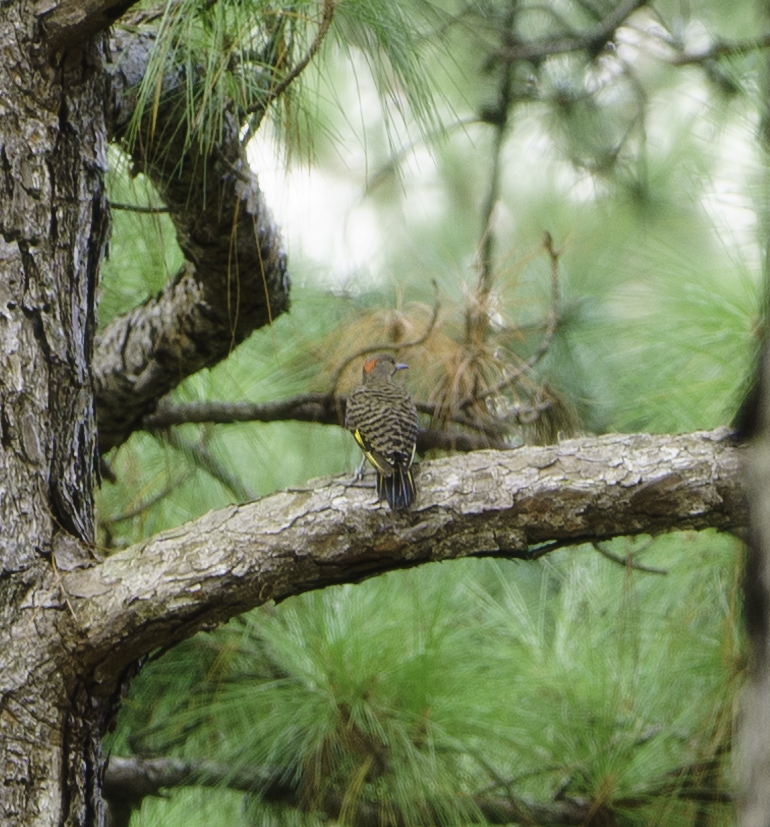
Southern Yellow-shafted Flicker is the southern species of the Northern Flicker, Colaptes auratus. It is the state bird of Alabama. Their diet consists mostly of insects, especially ants, but also includes berries and seeds. They prefer open meadows and flatwoods near a treeline of forest. Source: Wikipedia
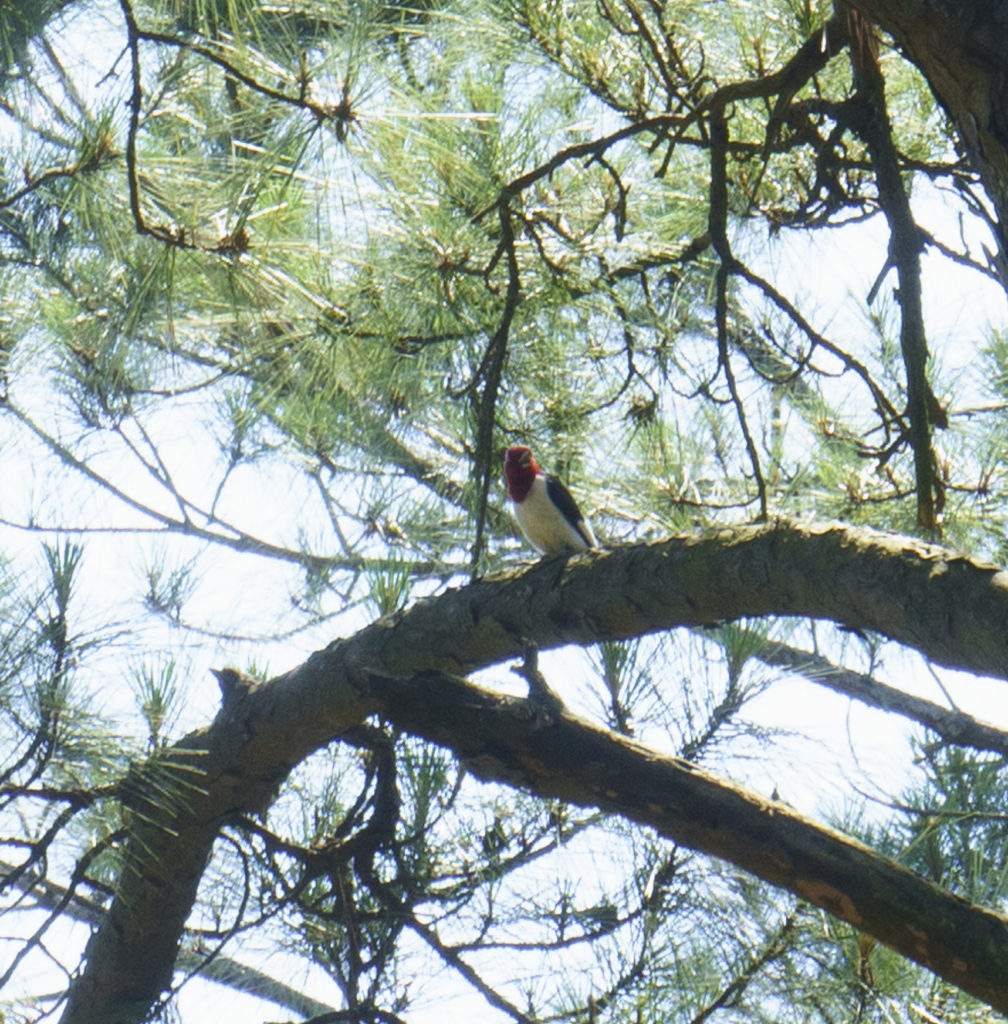
Red-headed Woodpecker
Melanerpes, erythrocephalus, fly to catch insects in the air or on the ground, forage on trees or gather and store nuts. They are omnivorous, eating insects, seeds, fruits, berries, nuts, and occasionally small rodents and even the eggs of other birds. About two thirds of their diet is made up of plants. They nest in a cavity in a dead tree or utility pole.
Songbirds
Songbirds are are birds whose feet have three toes facing forwards and one toe facing backwards allowing them to grasp a tree branch, wire or other curved surfaces as well as those that are flat. They have a highly developed voice box that allows them to sing melodious and complex songs.
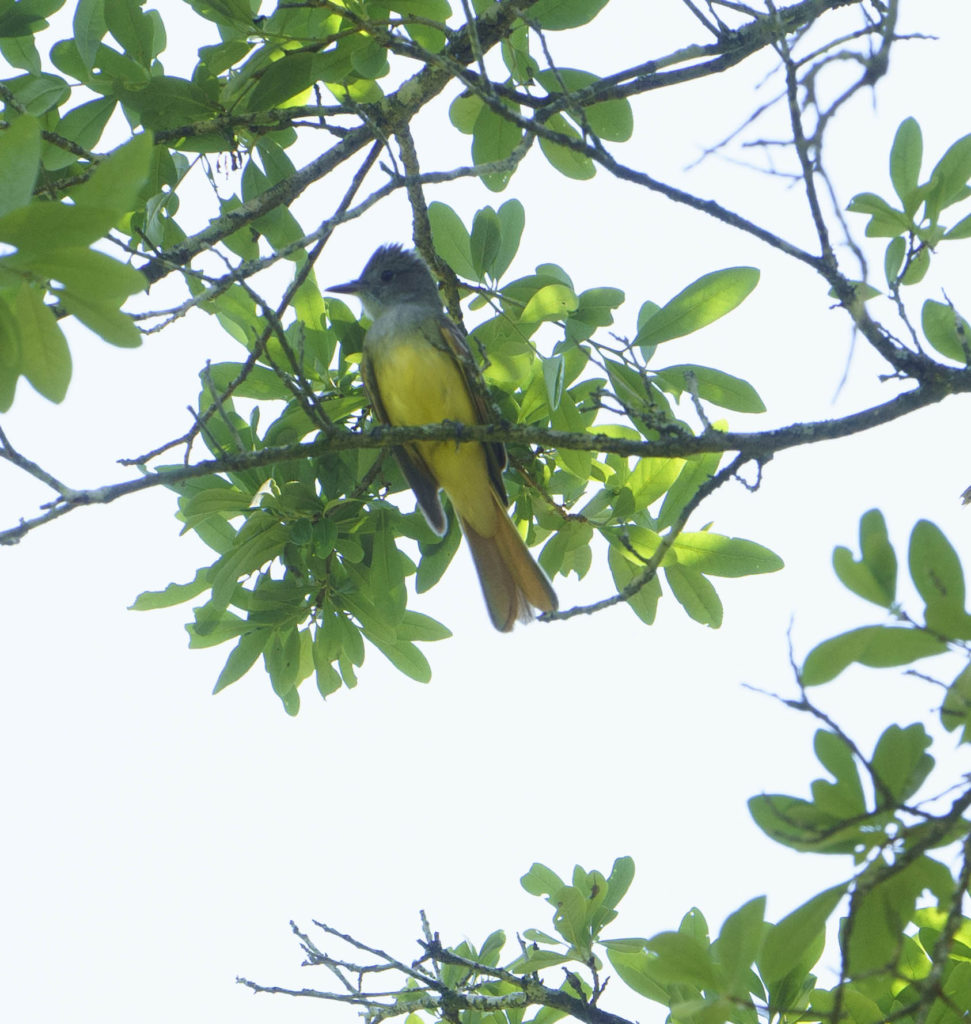
A Great Crested Flycatcher, Myiarchus crinitus, sitting in a live oak and waiting for available prey, is a large, insect-eating bird of the tyrant flycatcher family. The great crested flycatcher’s habitat is most often deciduous forests and at edges of clearings and mixed woodlands. They also favor landscapes with open canopy, such as second growth forests or woodlands that have been subjected to selective cutting. They avoid coniferous dominant habitats. The Great Crested Flycatcher is primarily an insectivore, with flies and spider making up the majority of its diet, but it will also consume small fruits and berries butterflies, moths, beetles, grasshoppers, crickets, and bees and wasps. Source: Wikipedia
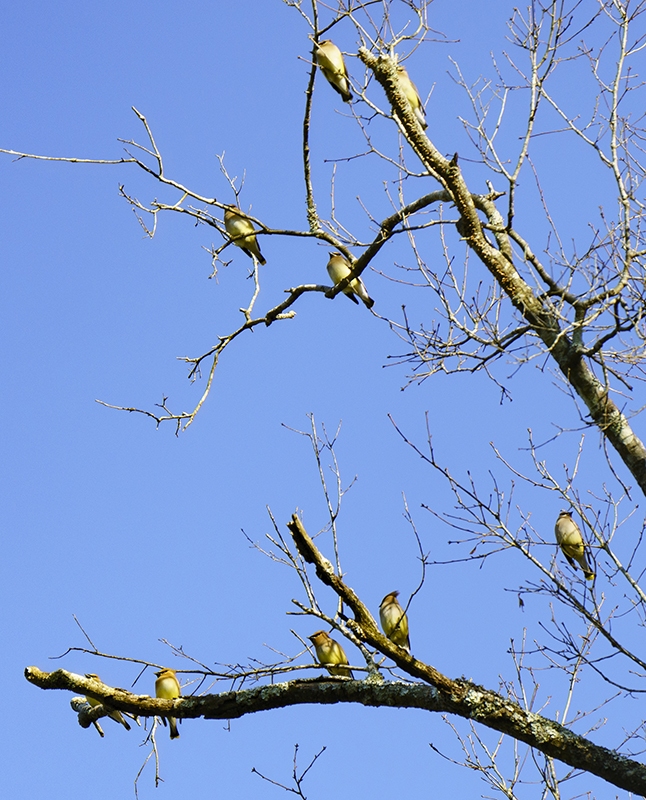
A small flock of Cedar Waxwings, Bombycilla cedrorum, high in an old oak tree at Vista Farm. It’s preferred habitat is at the edge of wooded areas, or “open” forests, especially those that provide access to berry sources as well as water. They are frequently seen in fruiting trees. Waxwings are attracted to the sound of running water and love to bathe in and drink from shallow creeks. Cedar waxwings are sociable, seen in flocks year round. They are non-territorial birds and “will often groom each other.” They move from place to place depending on where they can find good sources of berries. Cedar waxwings eat berries and sugary fruit year-round, including dogwood, serviceberry, cedar, juniper, hawthorn, and winterberry, with insects becoming an important part of the diet in the breeding season. Source: Wikipedia
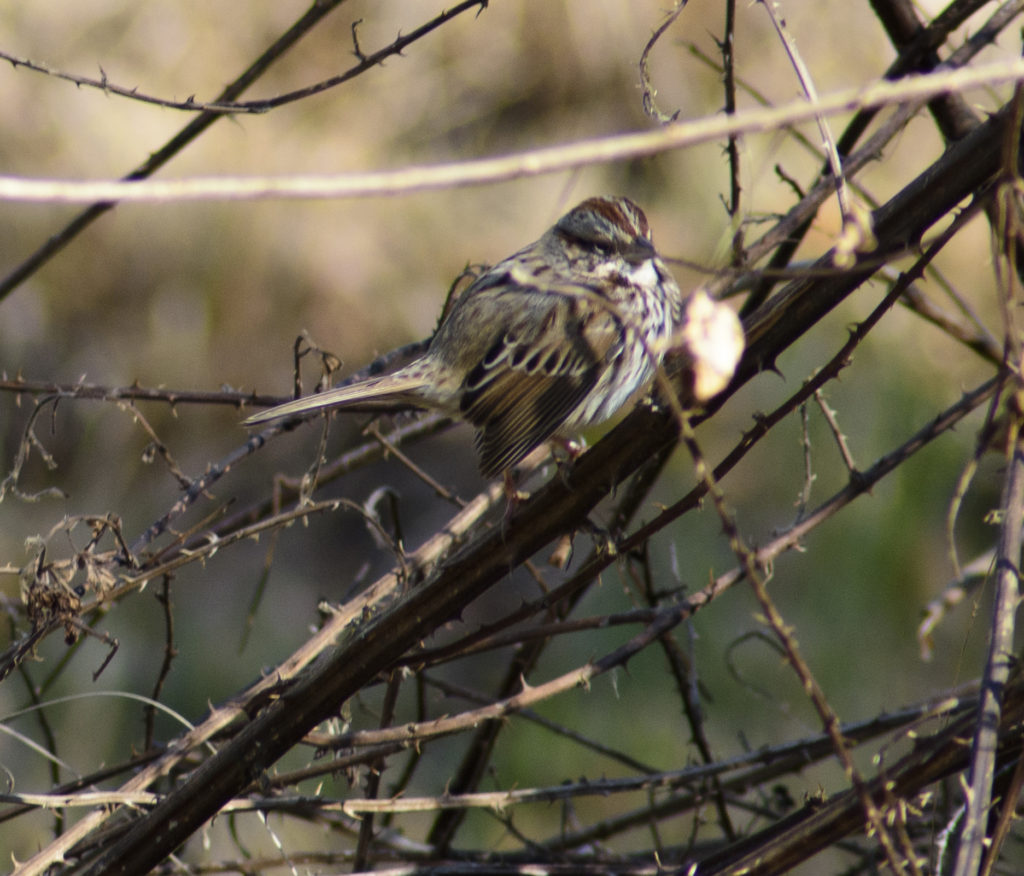
Swamp Sparrow, Melospiza georgiana, sunning on twig a in a briar patch at Vista Farm breeds around marshes all across eastern North America and central Canada. The bulky nest is attached to marsh vegetation, often just above the ground or surface of the water with leaves or grass arching over the top. The female builds a new nest each year and lays an average of four eggs per clutch. Females give a series of chips as they leave the nest, probably to ward off attacks by their mate or neighboring males. While swamp sparrows can be found year-round in small numbers on the southern edge of their breeding range, individuals probably all migrate, primarily to the southeastern United States. Swamp sparrows generally forage on the ground near the water’s edge, in shallow water or in marsh vegetation. In winter, their diet is principally fruit and seeds, while during the breeding season their diet is mainly insects and spiders. Source: Wikipedia
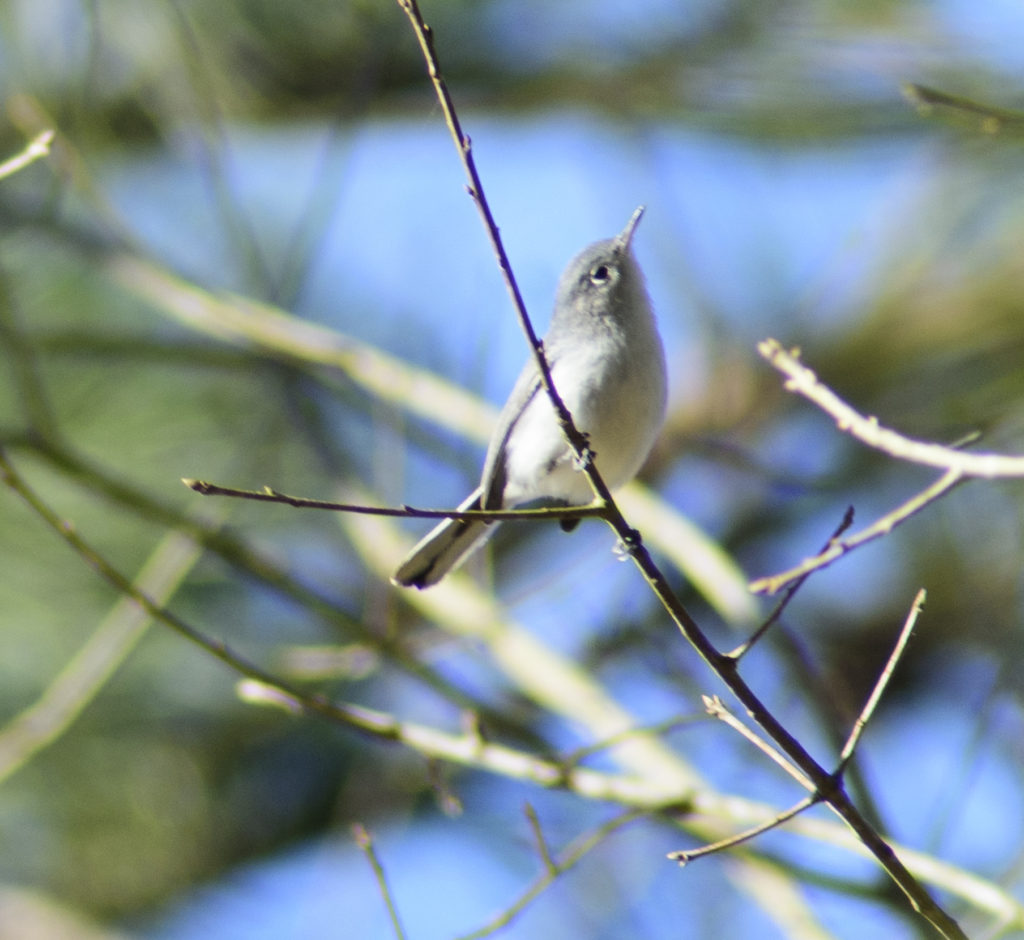
Blue-gray Gnatcatcher, Polioptila caerulea, perched on a twig and looking for insects.The blue-gray gnatcatcher builds its nest in open deciduous woods and shrublands in southern Ontario, the eastern and southwestern United States, and Mexico. Parents build a cone-like nest on a horizontal tree branch, and share feeding the young. They migrate to the southern United States, Mexico, northern Central America, Cuba, the Bahamas, Turks and Caicos, and the Cayman Islands. It hunts in trees or shrubs for insects, insect eggs and spiders. They may hover over foliage while snatching prey, or catch insects in flight. The tail is often held upright while defending territory or searching for food. Source: Wikipedia
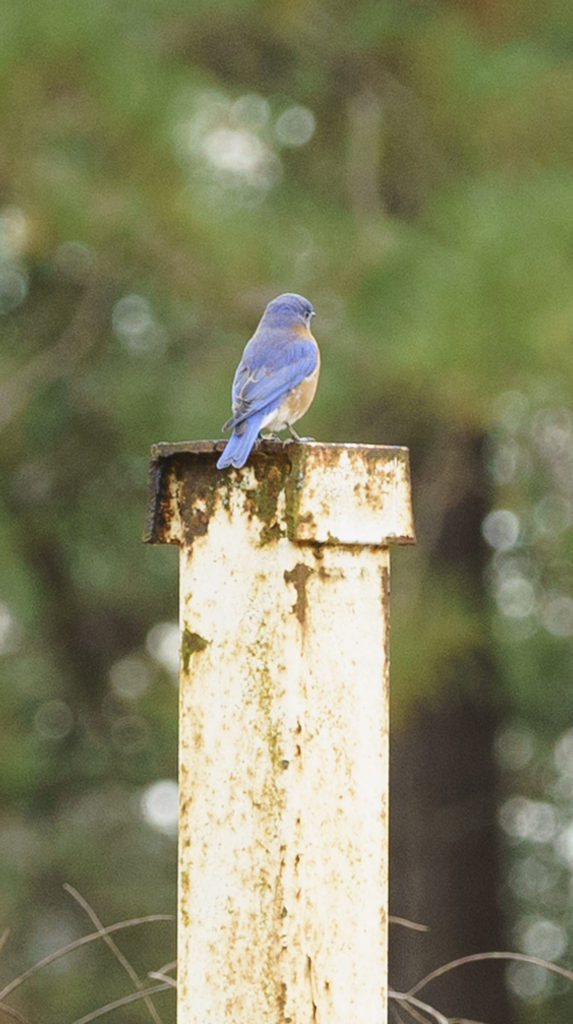
Eastern Bluebirds, Sialia sialis, feed by perching on a high point, such as a branch or fence post, and swooping down to catch insects on or near the ground like this male watching for food from a perch in the meadow. About two thirds of a bluebird’s diet consists of insects such as grasshoppers, crickets, katydids, and beetles; and will also eat earthworms, spiders, millipedes, centipedes, sowbugs, and snails. The remainder is made up of wild fruits or berries. They are generally found in open woodlands, farmlands, and orchards, east of the Rockies to the Gulf coast, and southeastern Arizona to Nicaragua. Source: Wikipedia
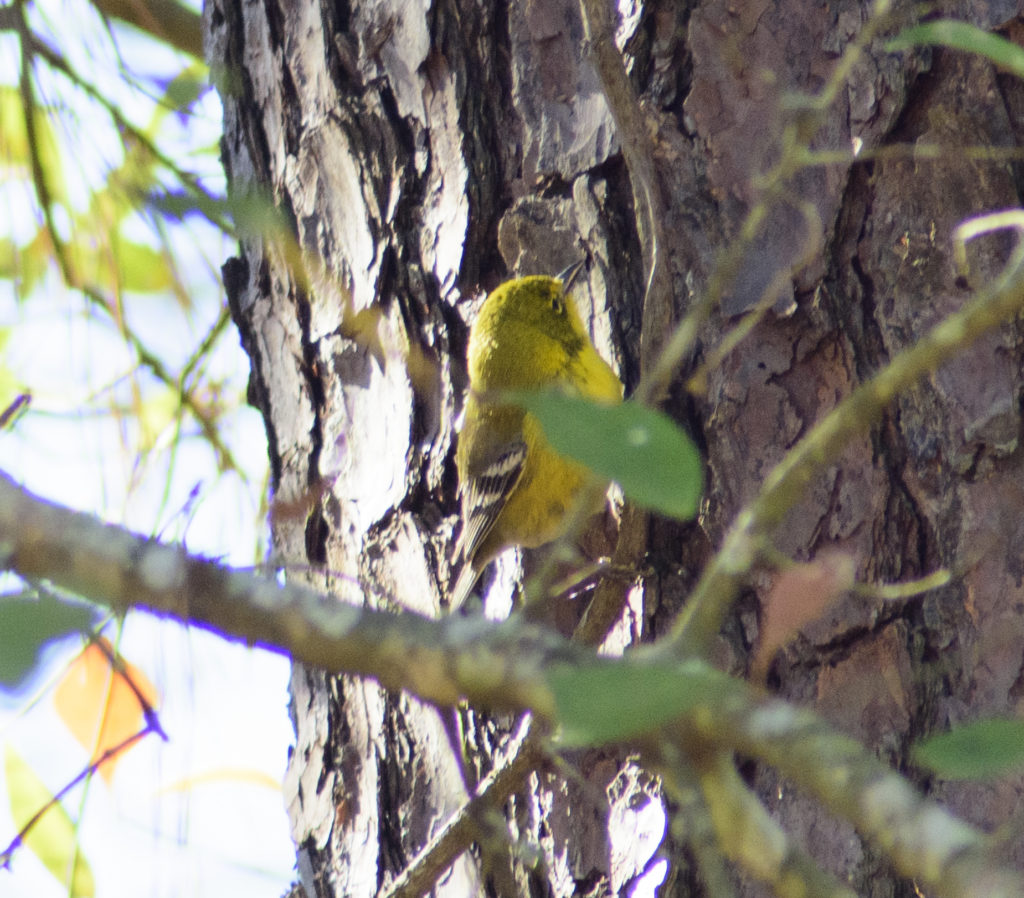
Pine Warbler, Setophaga pinus, is a tiny, bright yellow songbird that feeds on insects, seeds and berries using its long black beak to reach inside small spaces. Their breed in open pine woods in eastern North America. Pine Warblers are permanent residents in southern Florida. Some, however, migrate to northeastern Mexico and islands in the Caribbean. Their nests are deep, open cups, which are placed near the end of a tree branch. Pine warblers prefer to nest in pine trees, hence their names. Three to five blotched white eggs are laid. Source: Wikipedia
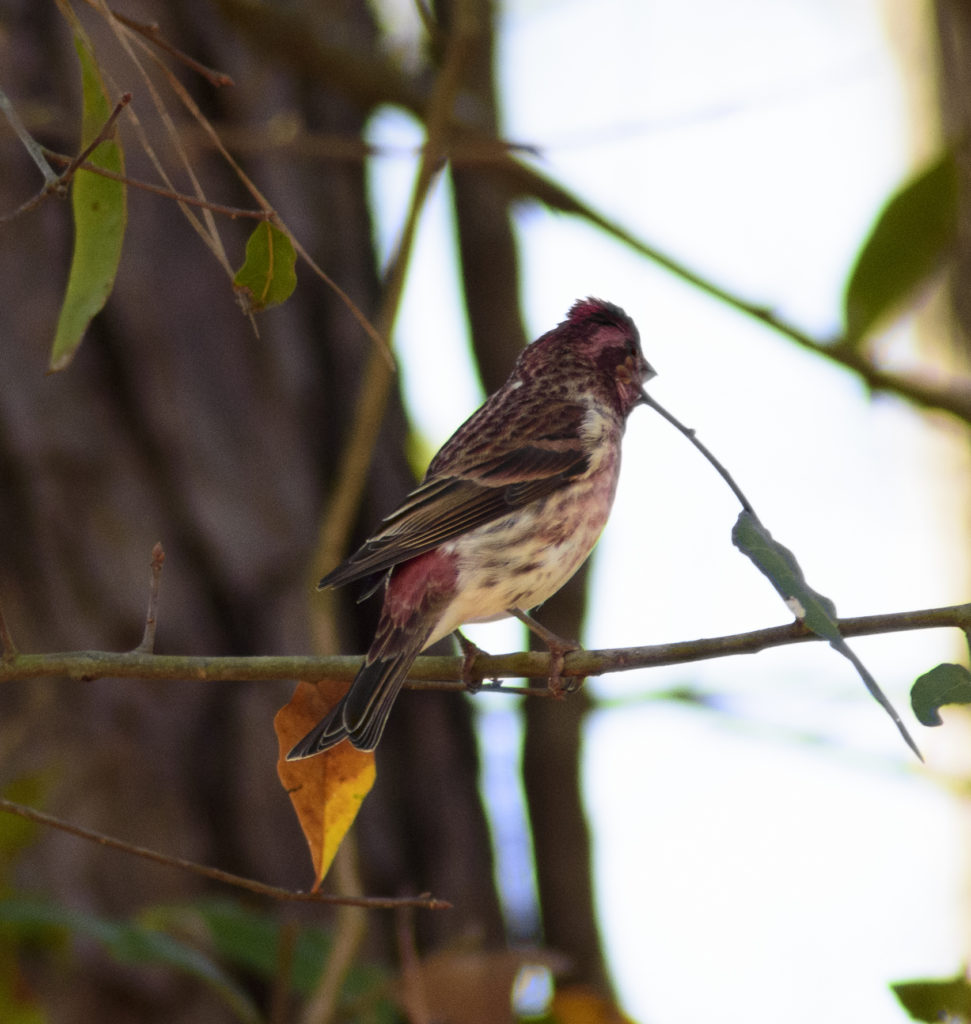
Purple Finch, Haemorhous purpureus, perched on a twig in the flatwood forest at Vista Farm. This is the state bird of New Hampshire. Purple Finches forage in trees and bushes, sometimes in ground cover for eat seeds, berries, and insects and they are also fond of sunflower seeds, millet, and thistle. They winter in the U.S. and breed in Canada. Source: Wikipedia
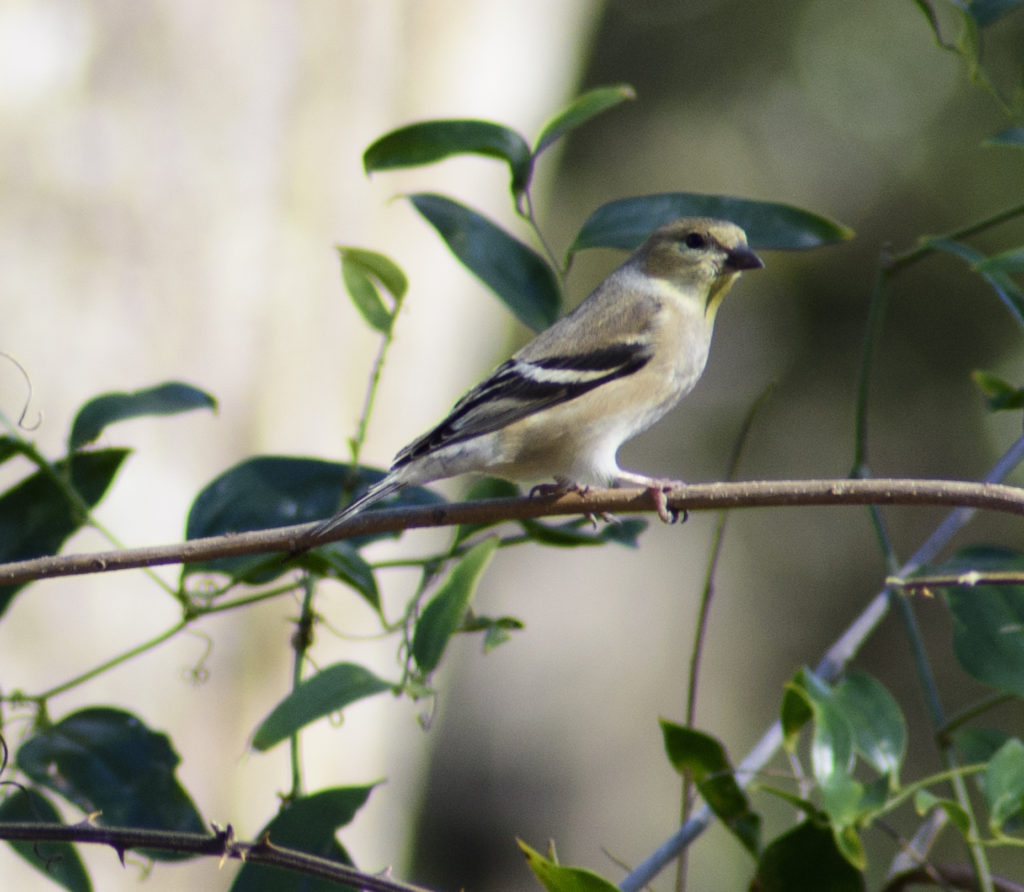
Female American Goldfinch, Spinus tristis, at Vista Farm. In the Fall they come in flocks to eat the sunflower seeds in the meadow.
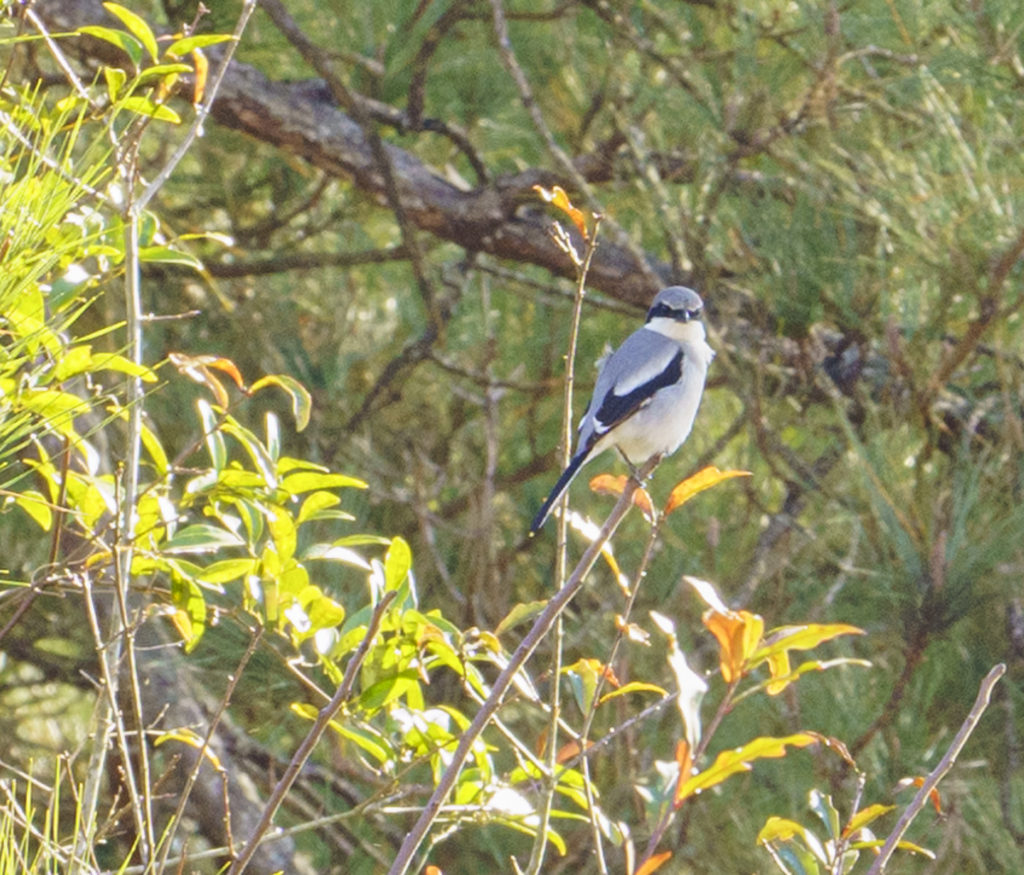
Loggerhead Shrike is a songbird with the habits of a predator. It hunts down small birds and rodents and impales the bodies on something sharp until it’s ready to eat.

Inca Dove, Columbina inca, is common at Vista Farm where they form flocks and feed on grass seeds. Inca doves build their nests primarily in trees and shrubs. The average diameter is about five centimeters. The male gathers nesting material and presents it to the female, who also gathers some nesting material. The nest is composed of twigs, grass, weed stalks, and leaves and becomes reinforced with the brood’s excrement. The nest is often used over and over. Source: Wikipedia
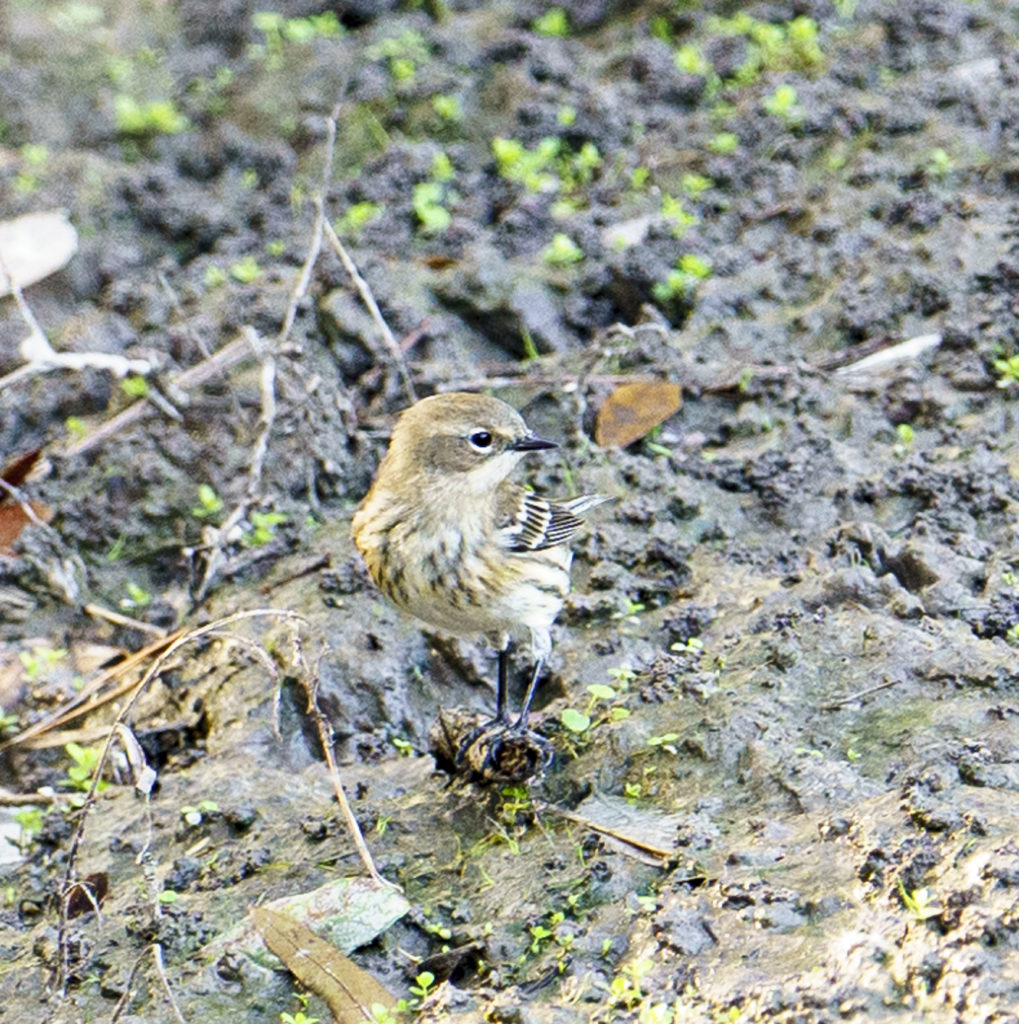
Flocks of Yellow-rumped Warblers, Setophaga coronata, are winter residents of Vista Farm where they feed on abundant pine seeds and insects while chirping continuously. By the end of March they have all migrated to their breeding grounds in northern coniferous forests. Source: Wikipedia
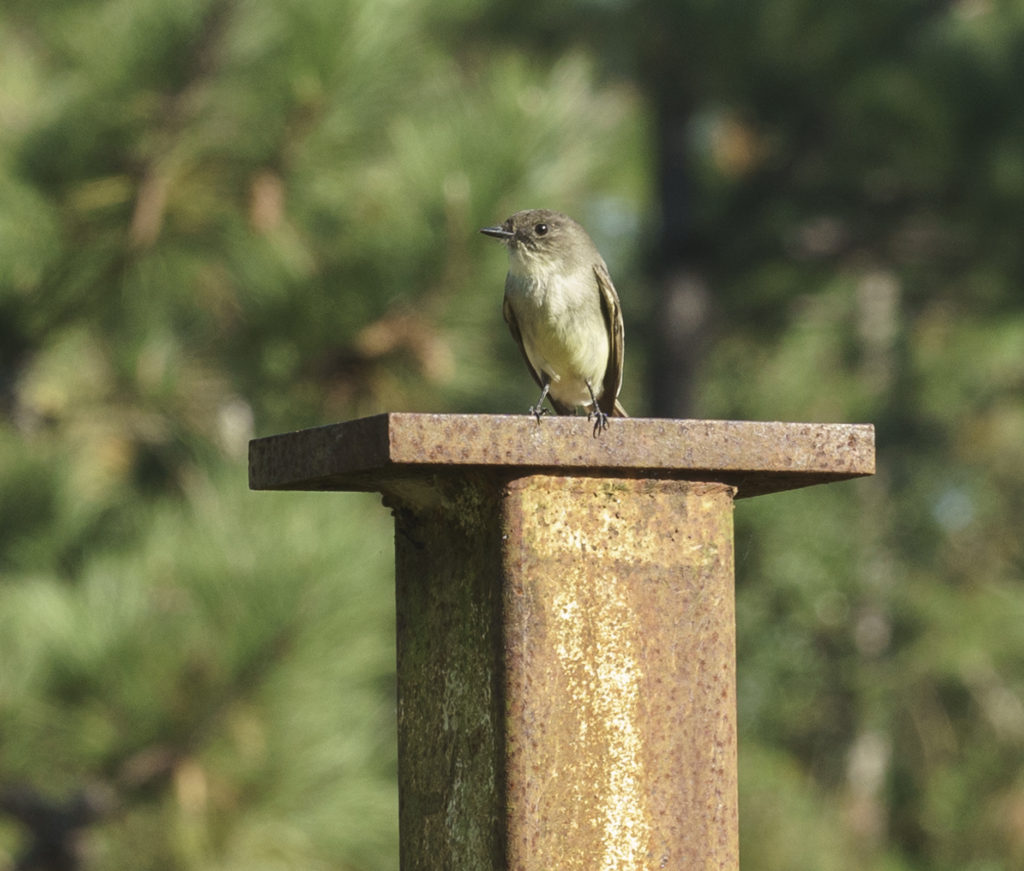
Eastern Phoebe, Sayornis phoebe, in the meadow at Vista Farm hunting prey from atop an old corner post.
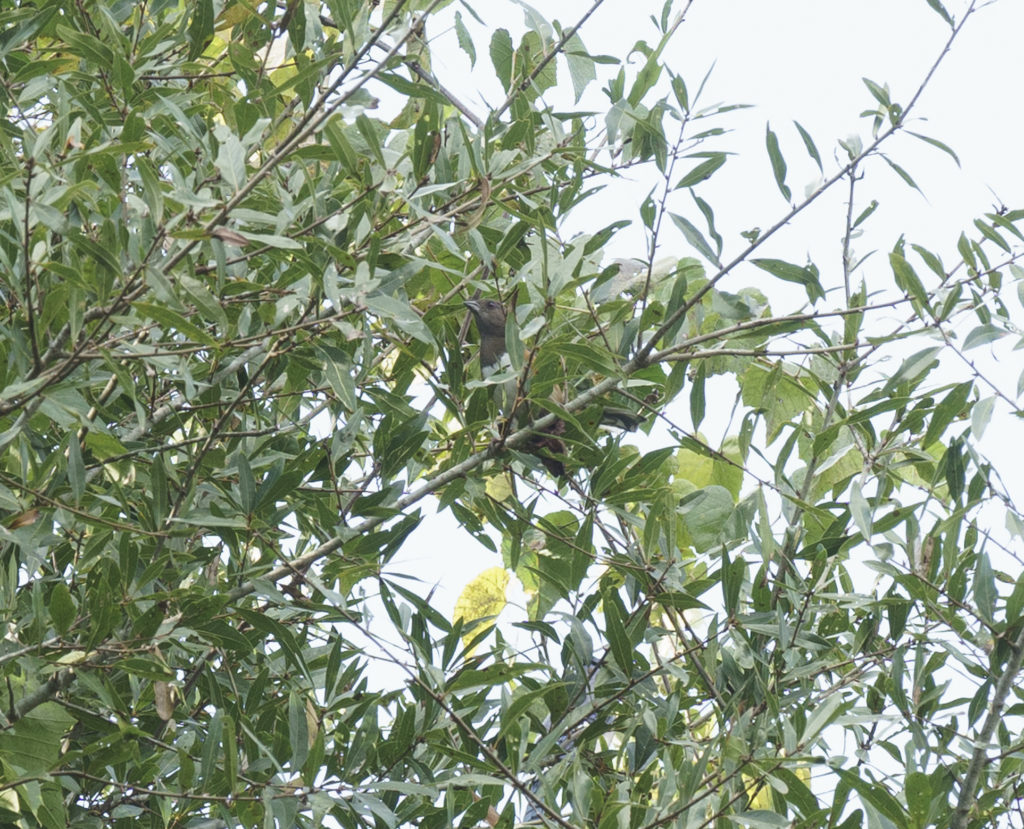
A male Eastern Towhee, Pipilo erythrophthalmus, is well-camouflaged in an oak tree at the edge of the forest.
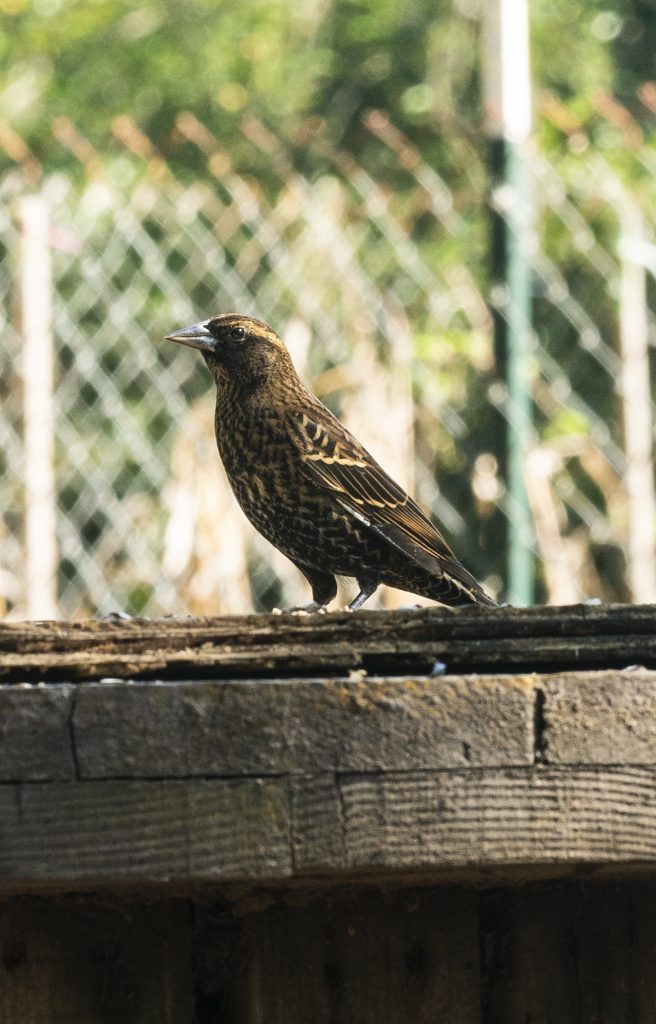
A female Redwing Blackbird, Agelaius phoeniceus. A male Redwing Blackbird.
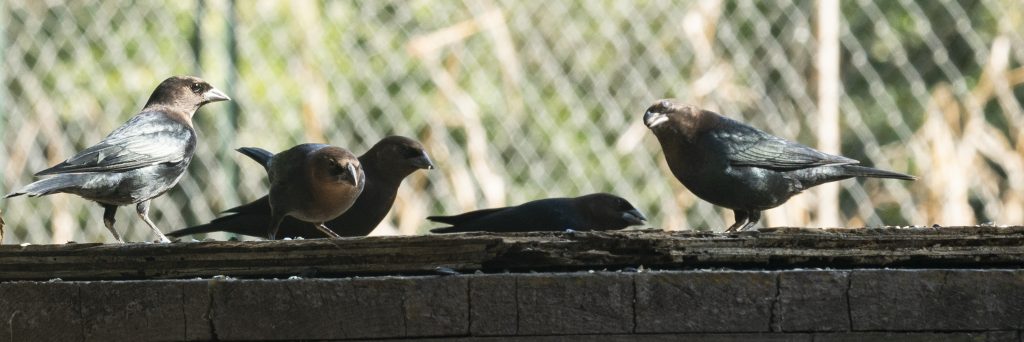
Brown-headed Cowbird,
Molothrus ater.
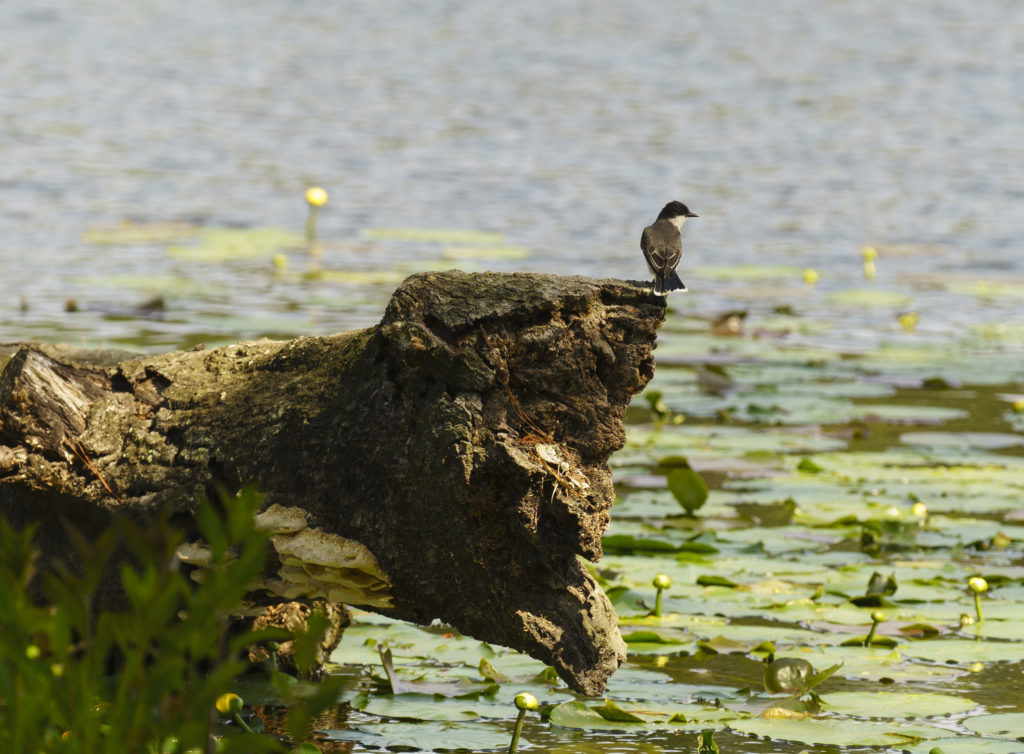
Eastern Kingbird, Tyrannus tyrannus, is an agile flier that often swoops down to pick insects off the surface of the pond at Vista Farm or flies out to catch insects in flight. They can even hover to pick prey off vegetation. The Eastern Kingbird is migratory in most areas, but can be seen year round in south Louisiana. The call is a high-pitched, buzzing and unmusical chirp.
Raptors
All raptors have a hooked beak for tearing apart prey, strong feet with sharp talons, keen eyesight, and a carnivorous diet.

Red-shouldered Hawk, Buteo lineatus, have very good vision and reasonably good sense of hearing, with talons capable of killing animals as big as their own size. Small mammals are typically the most common prey, but can include amphibians, reptiles, snakes, birds, fish, crawfish and large insects. A breeding pair will build a stick nest (sometimes including shredded bark, leaves and green sprigs) in a major fork of a large tree.The clutch size is typically three to four eggs. Source: Wikipedia
Water Birds
Vista Farm Birds include quite a few birds that can be generically called water birds. They include ducks, cormorants, grebes, kingfishers and geese. Not everything that quacks, swims and flies is a duck.
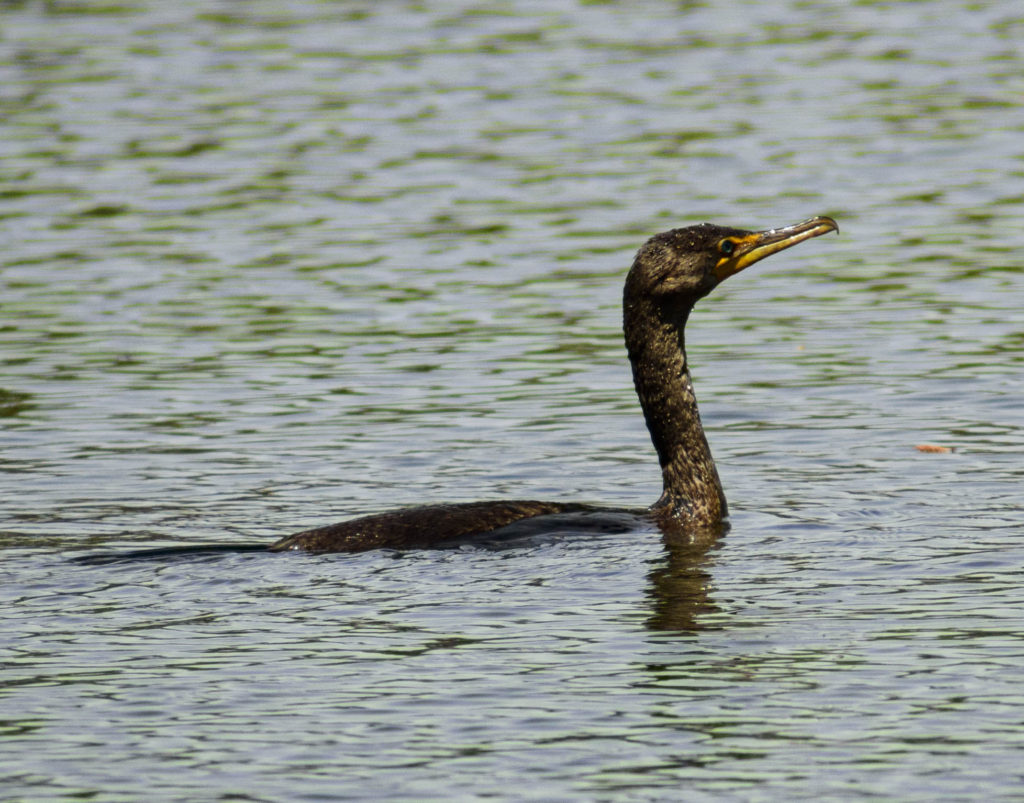
The double-crested cormorant, Phalacrocorax auritus, is not a duck. Rather it is a water bird with a stocky body, long neck, medium-sized tail, webbed feet, and a medium-sized hooked bill. Its habitat is near rivers and lakes as well as in coastal areas. Measuring 28–35 in in length, the double-crested cormorant is an all-black bird which gains a small double crest of black and white feathers over its eyes in breeding season. It mainly eats fish and hunts by swimming and diving. Unlike ducks, the feathers of double-crested cormorants do not repel water. While most ducks build nests on land, double-crested cormorants build stick nests in trees. Source: Wikipedia
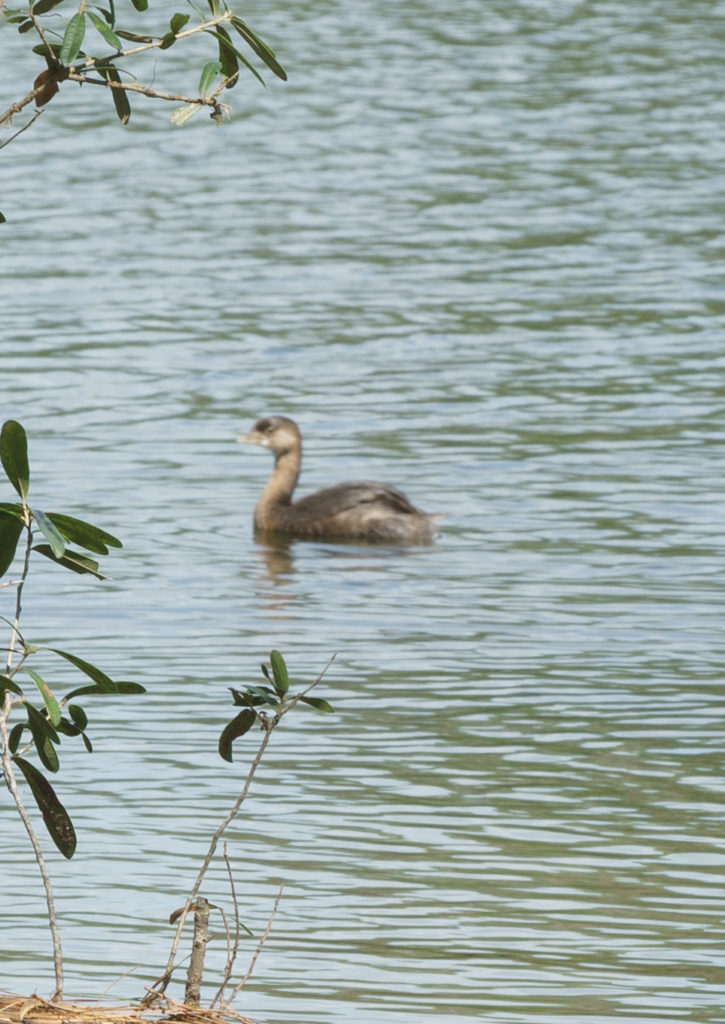
Pied-billed Grebe, Podilymbus podiceps, is not a duck. Always alone on the pond, it rarely gets close enough to shoot a photo. There is a white feathering under the tail. The pied-billed grebe is a species of the grebe family of water birds. After the extinction of the Atitlán grebe (Podilymbus gigas), the Pied-Billed Grebe became the sole extant member of the genus Podilymbus. Source: Wikipedia.
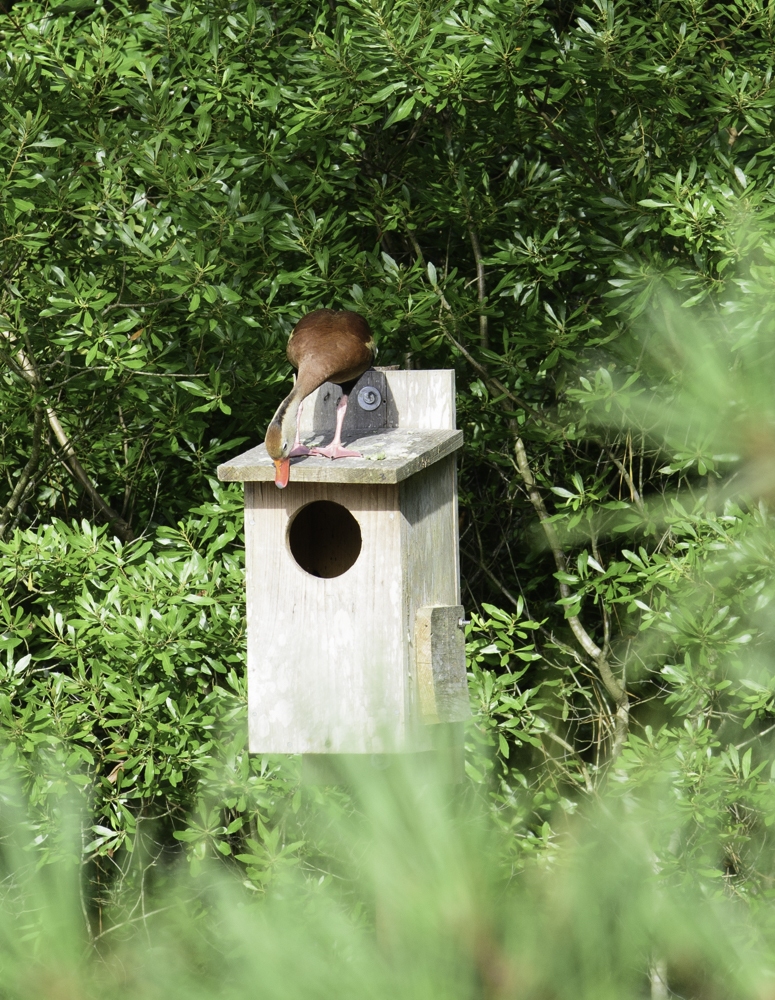
Black-bellied Whistling Ducks are tropical ducks that have long legs and tails, and emit a shrill whistling call. They are highly gregarious, forming large flocks when not breeding. they nest in hollow trees or wood duck boxes near quiet freshwater ponds, lakes, and marshes, cultivated land or reservoirs with plentiful vegetation, where they feed mainly at night on seeds and other plant food, insects and aquatic invertebrates, and tadpoles.
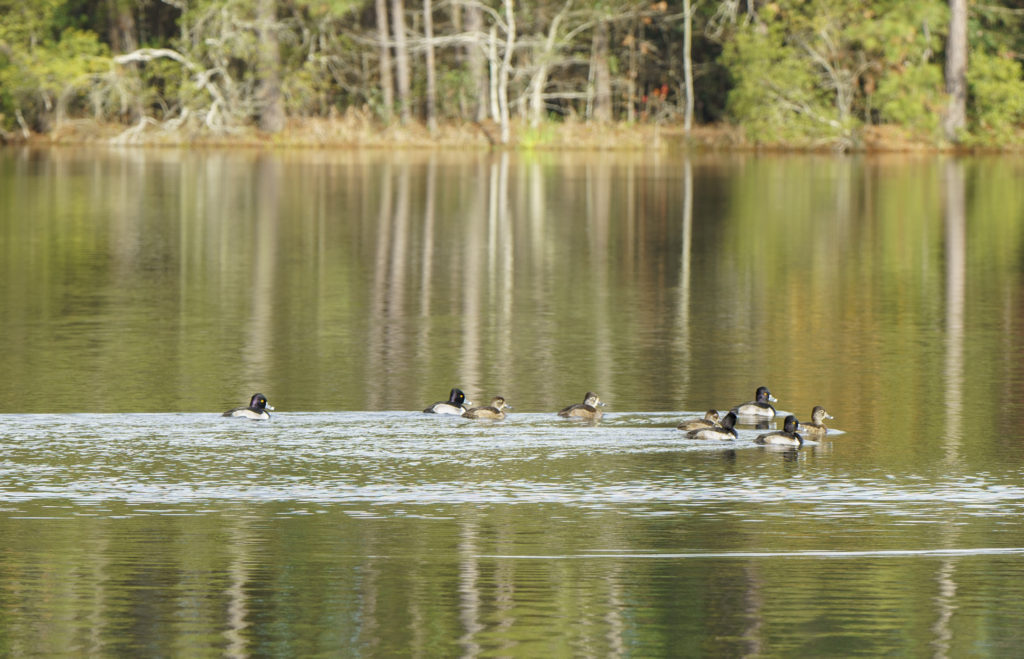
A flock of wild Ring-necked ducks, Aythya collaris, on the pond at Vista Farm. The Ring-necked duck is a diving duck commonly found in freshwater ponds and lakes. They breed in wooded lakes or ponds in the northern United States and Canada. These ducks are omnivores and feed mainly by diving or dabbling at the surface. Ducklings are dependent on animal matter such as insects, earthworms, leeches, midges and snails, but as they mature they tend change their diet to submerged plants such as pondweed, coontail, and emergents such as annual wild rice and snails. Source: Wikipedia
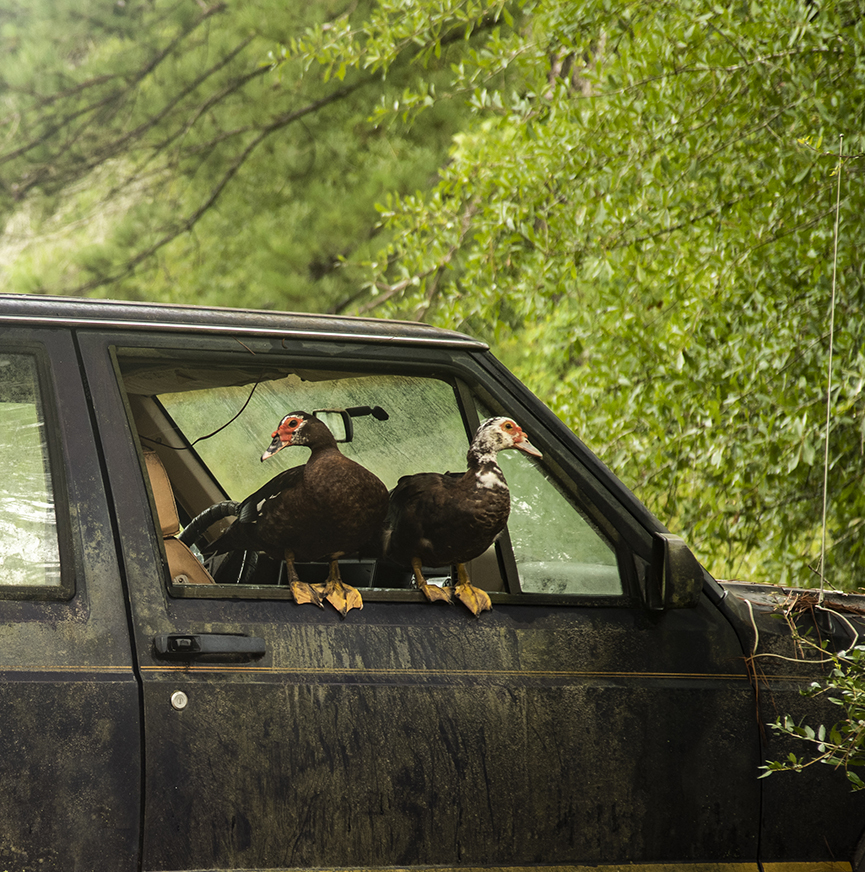
Muscovy hens perching on a car window. They are not technically a duck because they did not descend from the mallard which is the original ancestor of all true ducks. They hiss like a goose and have enormously long and deadly talons which will leave a permanent scar if you mess with them.

Belted Kingfisher, Megaceryle alcyon, is often seen perched in trees, posts, or other suitable “watchpoints” close to water before plunging in head first after its fish prey. They eat amphibians, small crustaceans, insects, small mammals and reptiles. The Kingfisher nests in a horizontal tunnel made in a river bank or sand bank and excavated by both parents. The female lays five to eight eggs and both adults incubate the eggs and feed the young. One possible reason for the uphill slope is that, in case of flooding, the chicks will be able to survive in the air pocket formed by the elevated end of the tunnel. Source: Wikipedia
Herons, Egrets and Other Wading Birds
Herons are carnivorous animals with wide wingspans, long legs for wading in shallow water and long necks with harpoon-like beaks for reaching far out to snare prey. They are coastal birds in the family Ardeidae and thrive in wetlands when food is plentiful.
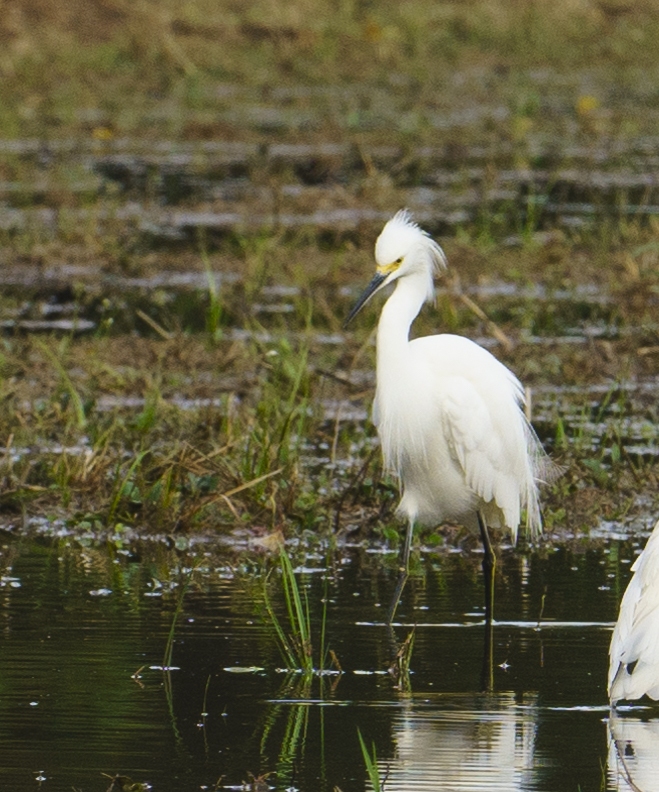
Snowy Egret, Egretta thula, is a small white heron that thrives in the wetlands of Louisiana. The eat fish, crustaceans (such as crabs, shrimp and crayfish), insects, lizards and snake), snails, frogs, toads and worms which are plentiful at Vista Farm in the shallow water along the edge of the pond or in the meadow after a heavy rain. Their yellow feet and black bill are distinctive.
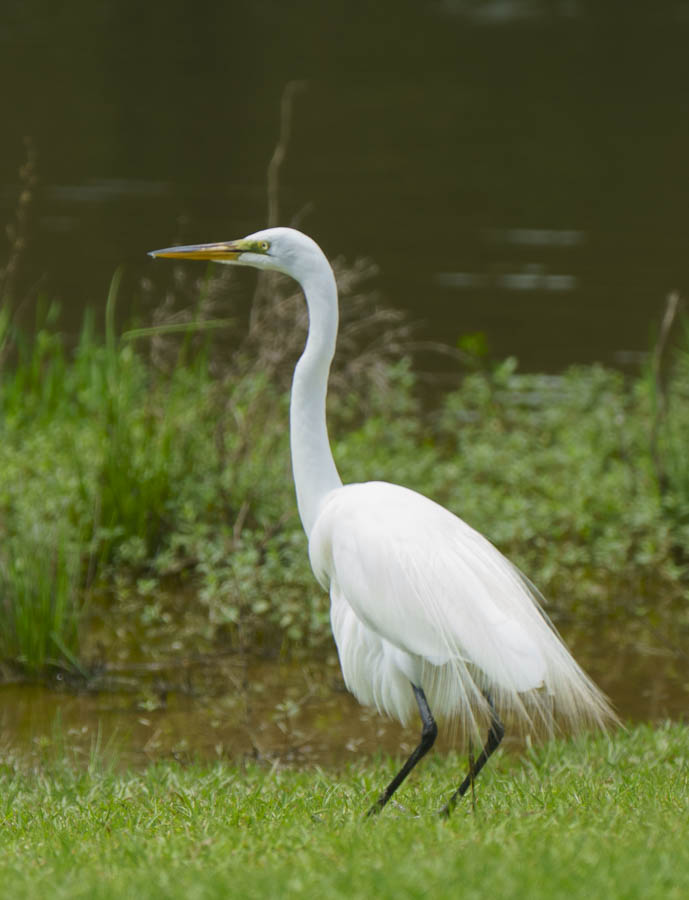
The Great Egret, Ardea alba, is a large heron with all-white plumage found across most of the tropical and warmer temperate regions of the world. It builds tree nests in colonies close to water. It grows up to 3.3 ft tall, and has a wingspan of 52 to 67 inches. Males and females are identical in appearance; juveniles look like non-breeding adults. The great egret flies slowly with its neck retracted. It walks with its neck extended and wings held close. It is not normally vocal but gives a low, hoarse croak when disturbed sometimes with higher-pitched squawks. The great egret feeds by standing still in shallow water and allowing prey to come within the striking distance of its long sharp bill. Favorite food of the Great Egret is fish, frogs, small mammals, small reptiles and insects. Source: Wikipedia

White Ibis, Eudocimus albus, is one of only two members of the Threskiornithidae family. It is a medium-sized wading bird whose diet consists of small aquatic prey, such as insects, worms, small fish, and crawfish. At Vista Farm Ibis moves quickly along in standing water after a heavy rain. Probing with its beak, it feels for and captures prey without ever seeing it. Distinctive black wing tips are only seen during flight.
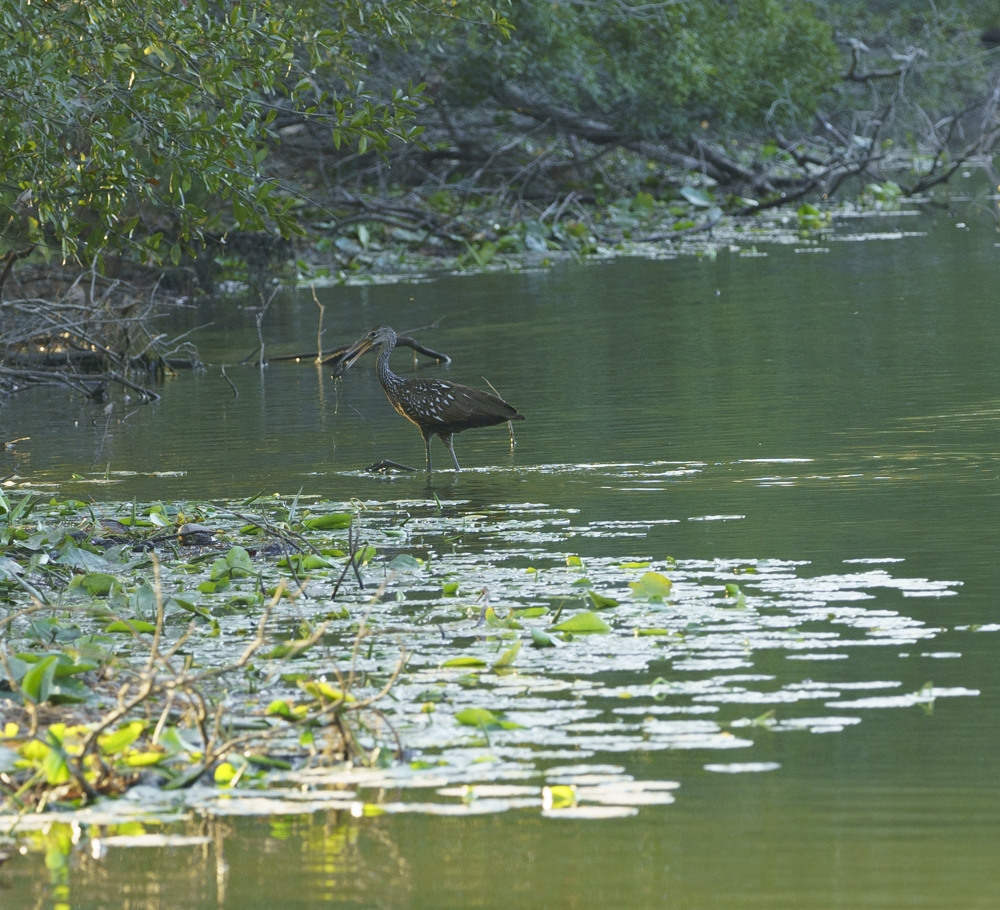
Limpkin, Aramus guarauna, is the only extant species in the family Aramidae. They are found mostly in wetlands in warm parts of the Americas. They feed on molluscs, primarily apple snails. At Vista Farm mussels appear to be our Limpkin’s primary food. It submerges its entire head and neck to hunt, then takes the mussel to the shore and hammers a hole in it with its long beak to get the mussel out of the shell.
Recent Posts
Archives
Categories
- Advice
- Animals
- Biodiversity
- Bird Migration
- Birds
- Butterflies
- Carbon
- Climate
- composting
- Ecology
- Ecosystem
- Environment
- Fishing pier
- Floating boat dock
- Gardening
- Grasses
- Habitat
- Health
- Insects
- Muscovy
- Muscovy Duck
- Native Lousiana Species
- Native Wildflowers
- NRCS
- Nutrition
- Plants
- Pollinators
- Recycle
- Travel and Tourism
- Trees
- Uncategorized
- Weather
- Wildflowers
- Wildlife
Most Commented Posts
- The Ecosystems at Vista Farm, a Small-Wildlife Habitat By Judy Darby on August 8, 2019 0
- Dirt and Germs! By Judy Darby on August 12, 2019 0
- Vista Farm, A 30-acre Protected Flatwood By Judy Darby on August 13, 2019 0
Recent Comments
Most Liked Posts
- Loblolly or Slash–Which Pine Is It? By Judy Darby on September 7, 2019 9
- Native Louisiana Plants at Vista Farm By Judy Darby on June 8, 2020 2
- How To Set up A Wood Duck Nest Box By Judy Darby on March 8, 2021 2

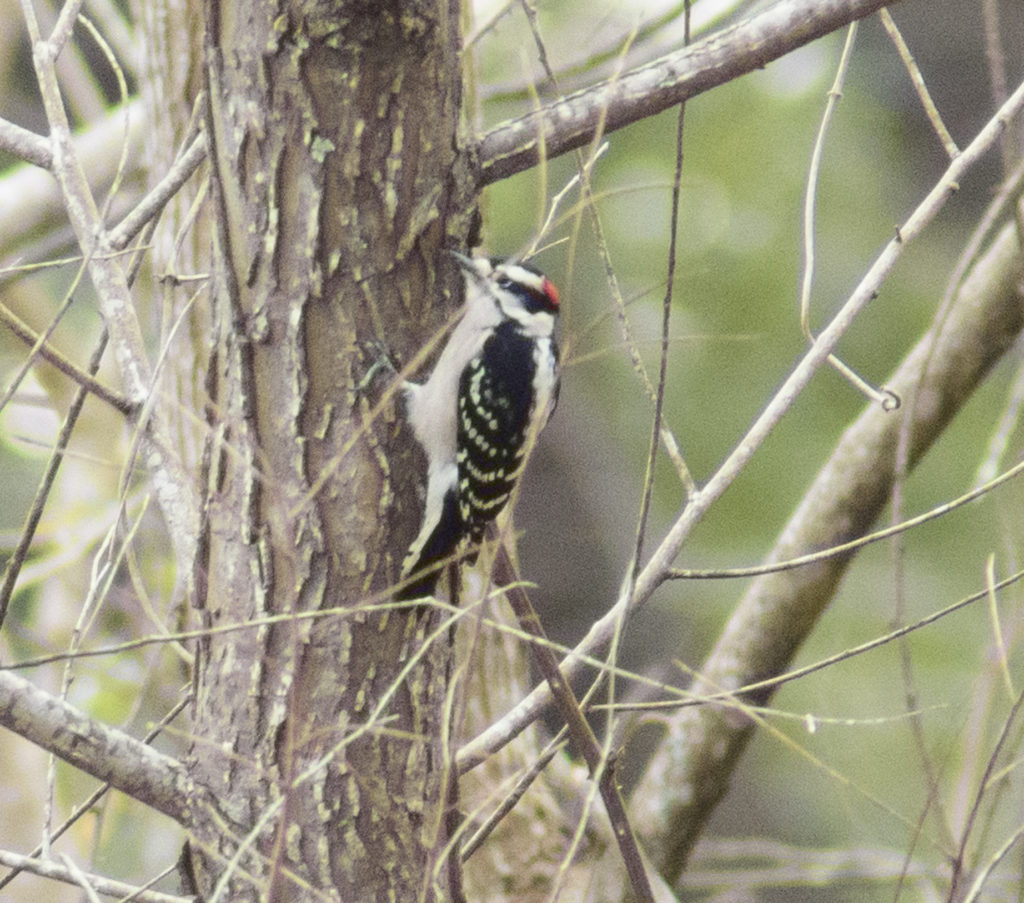
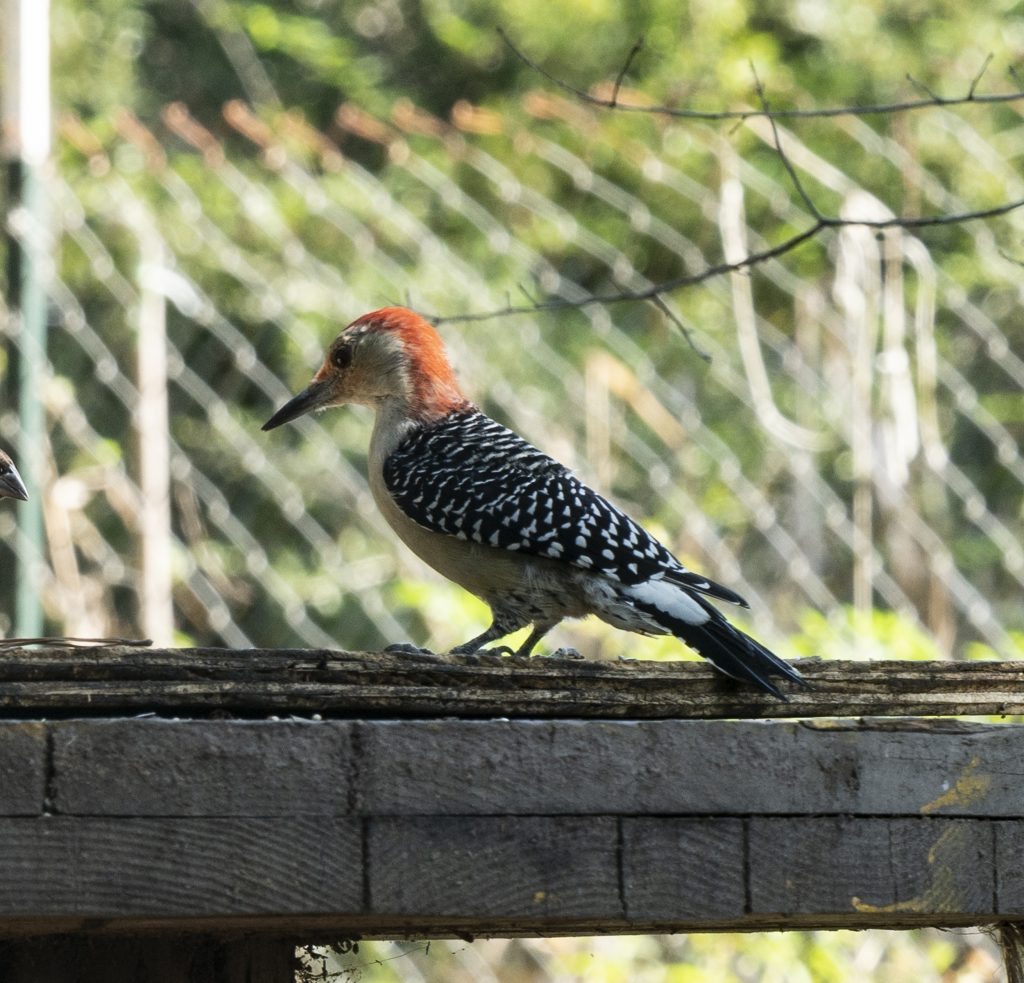
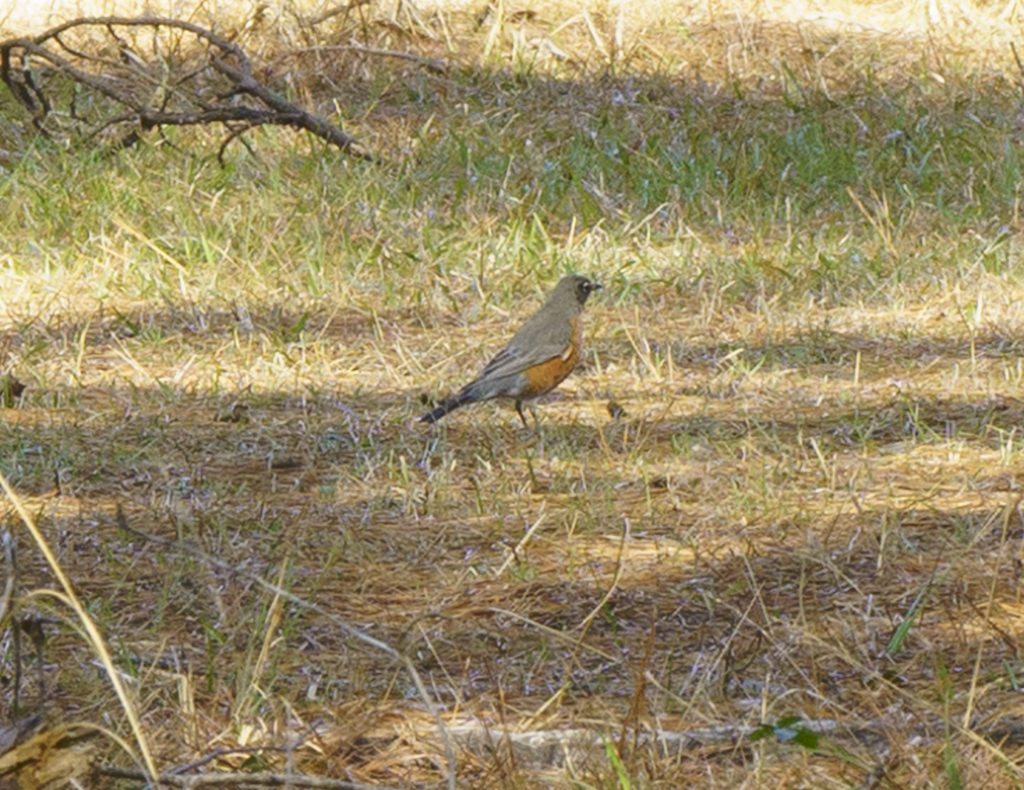
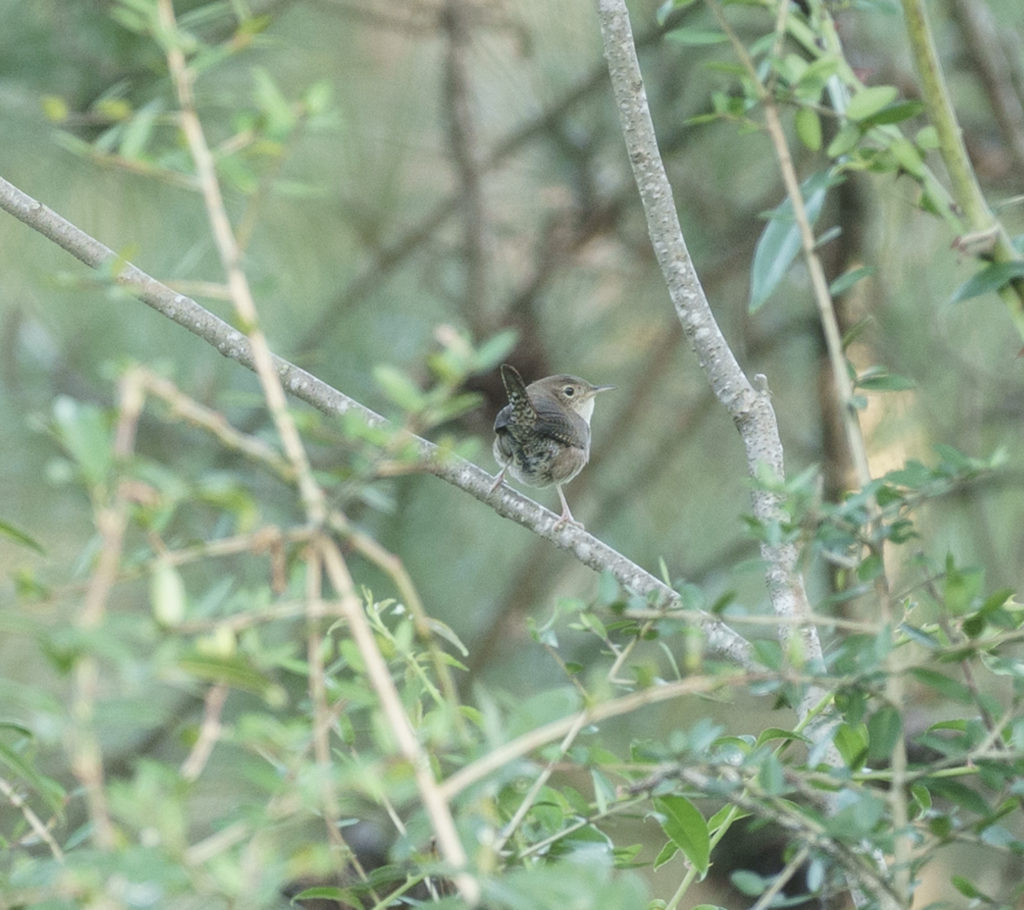
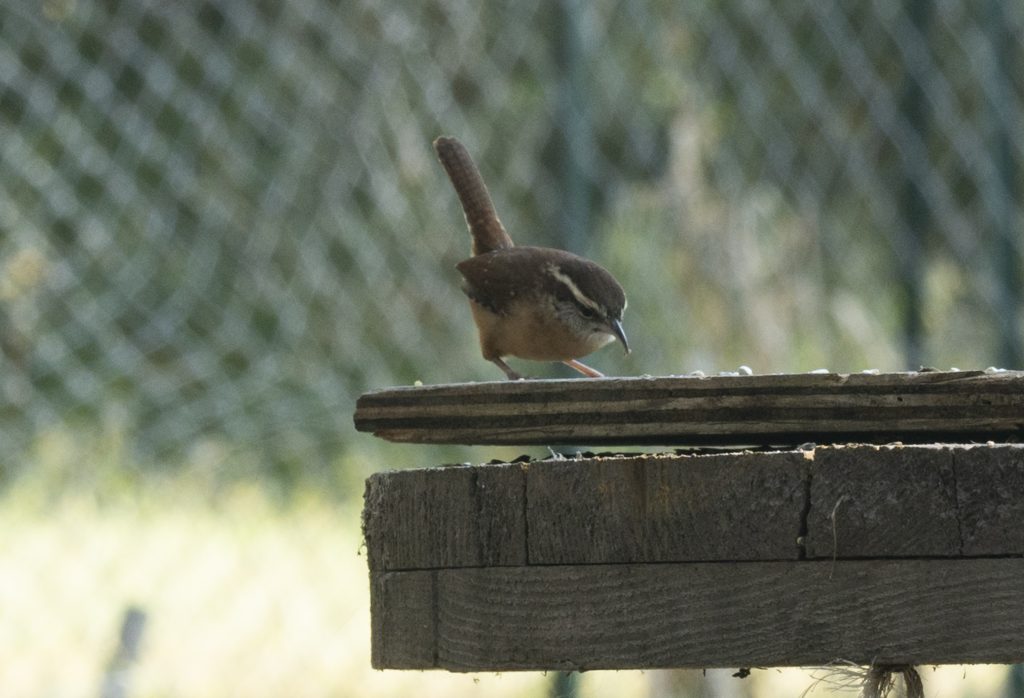
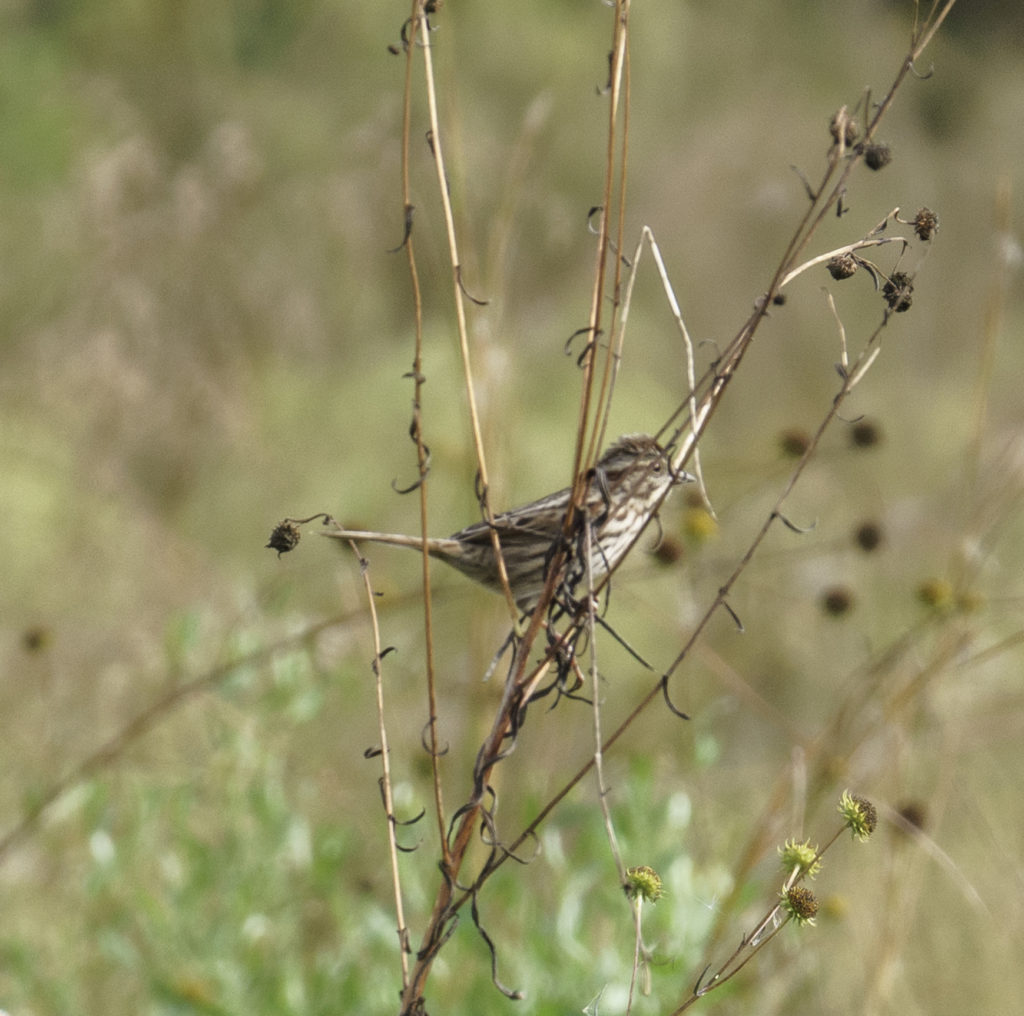
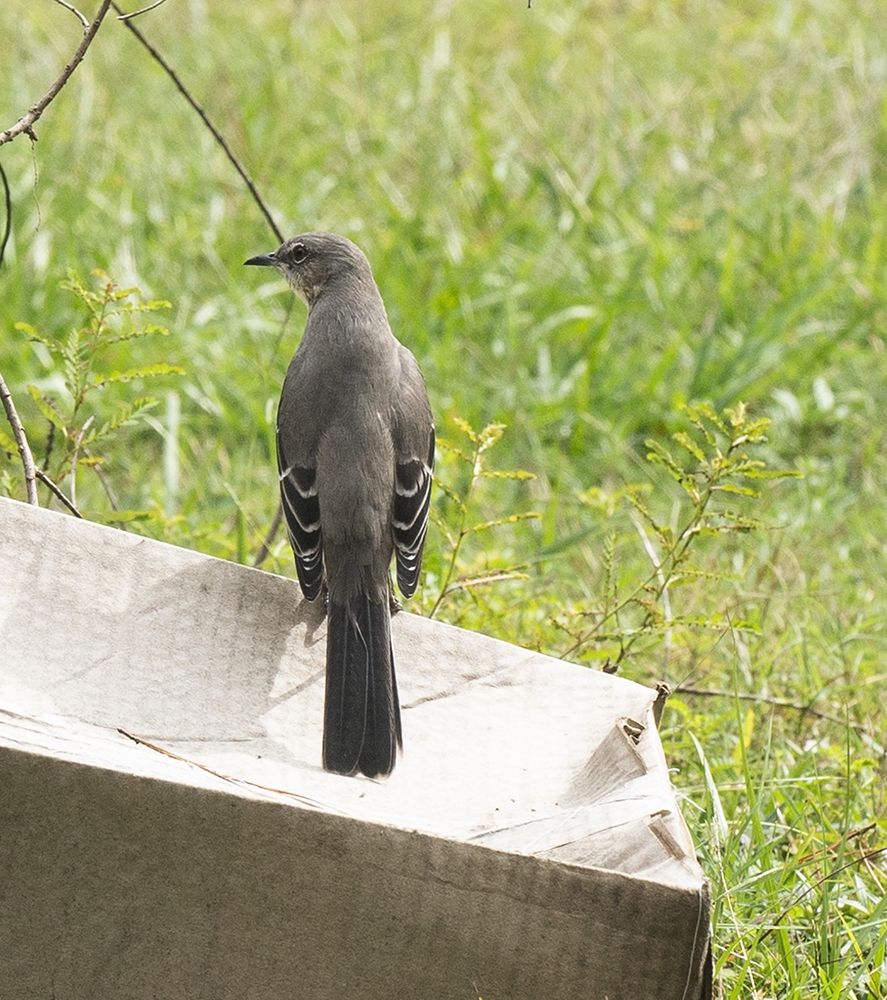
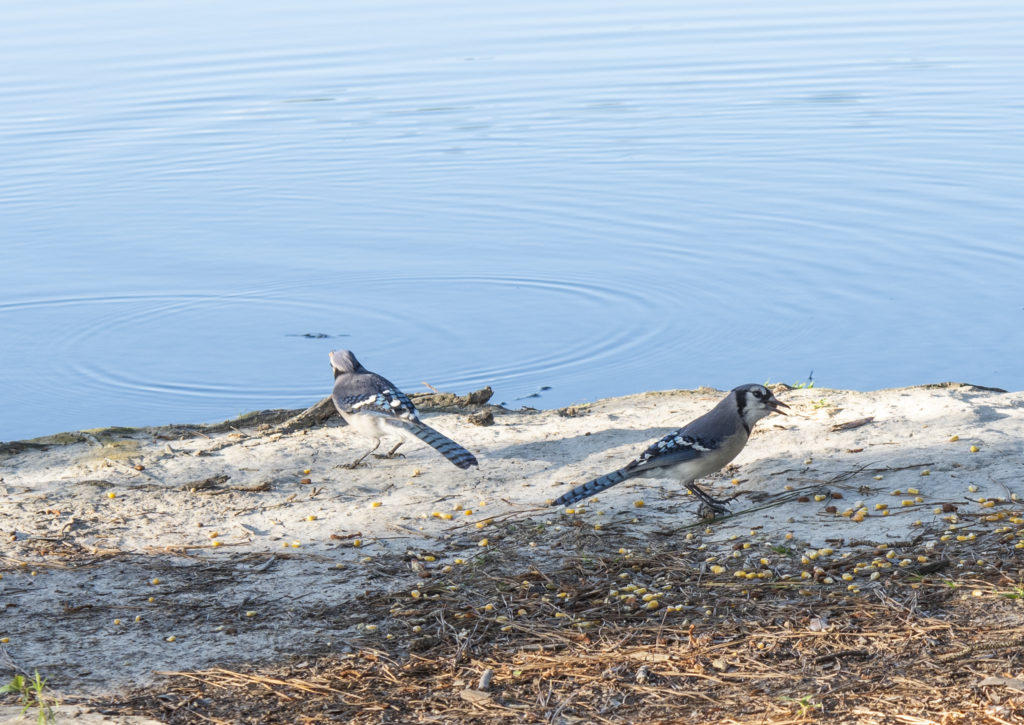
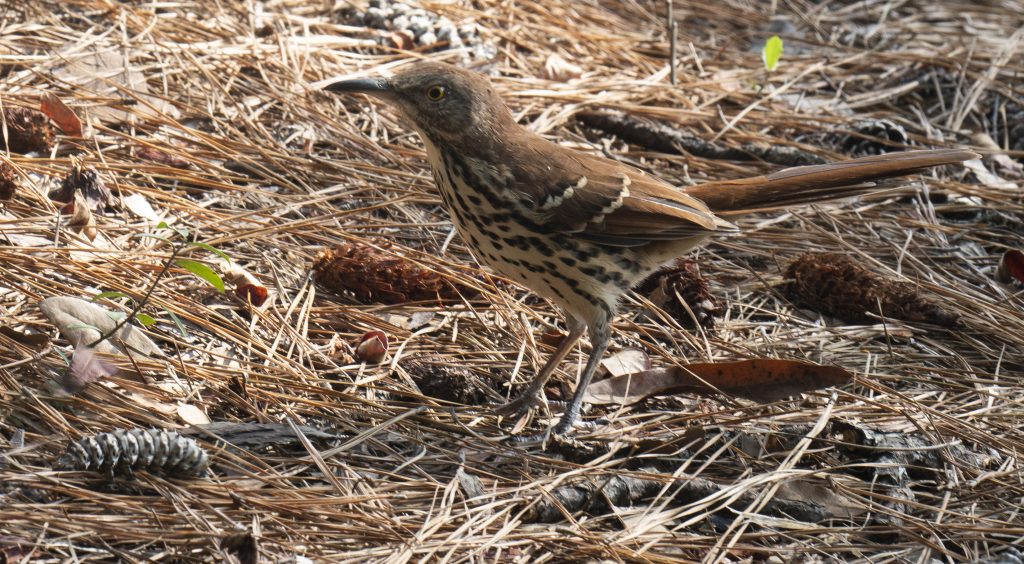
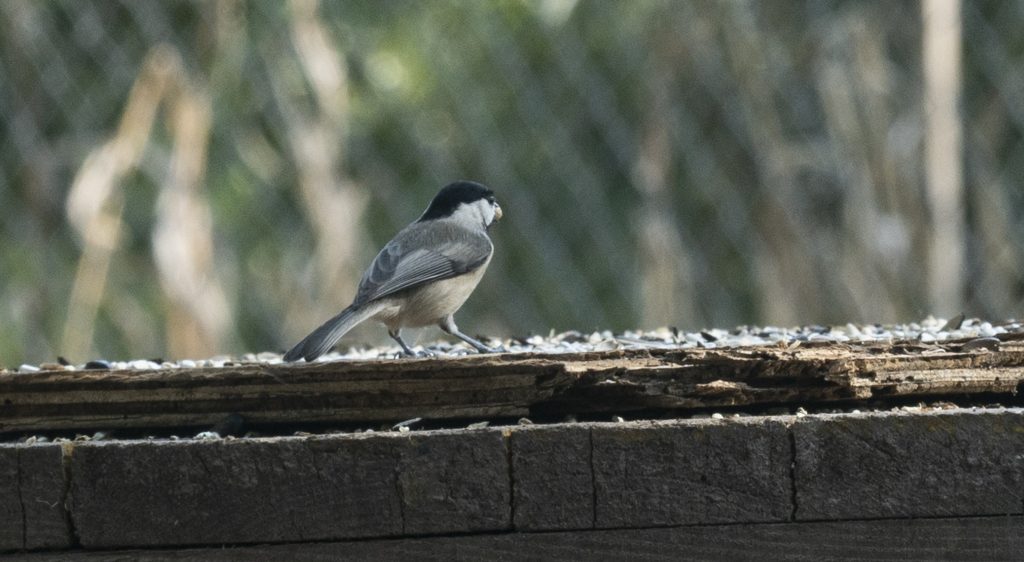
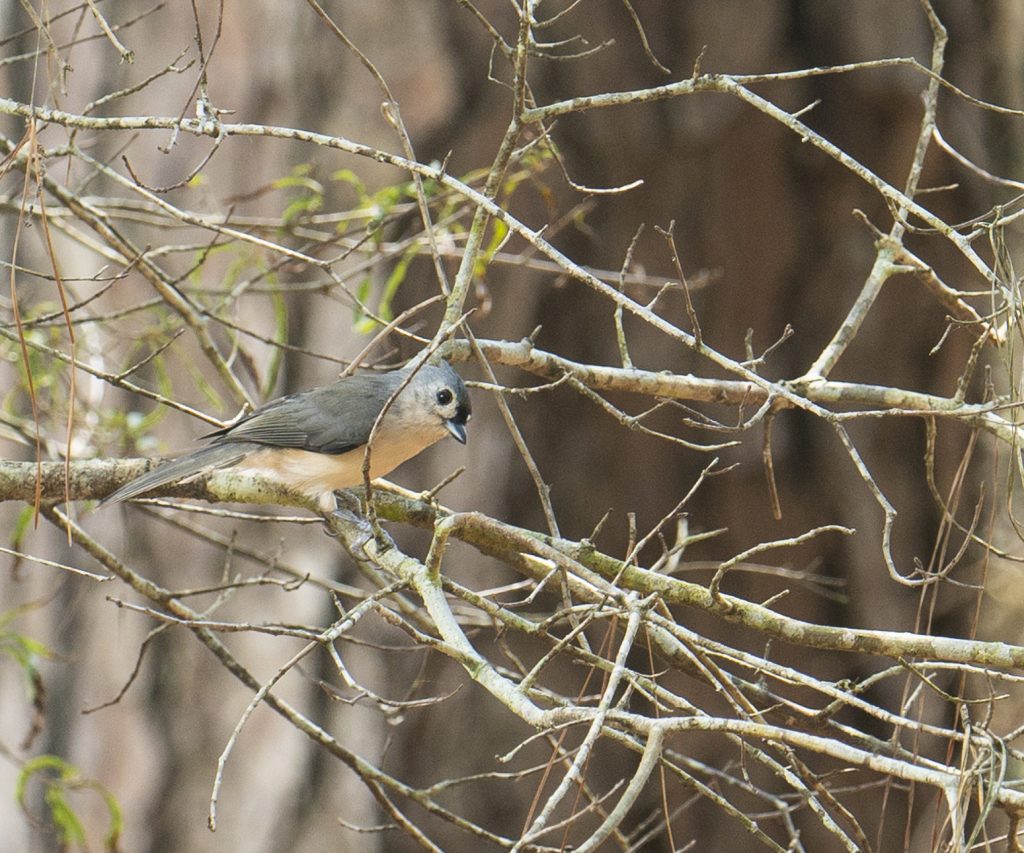

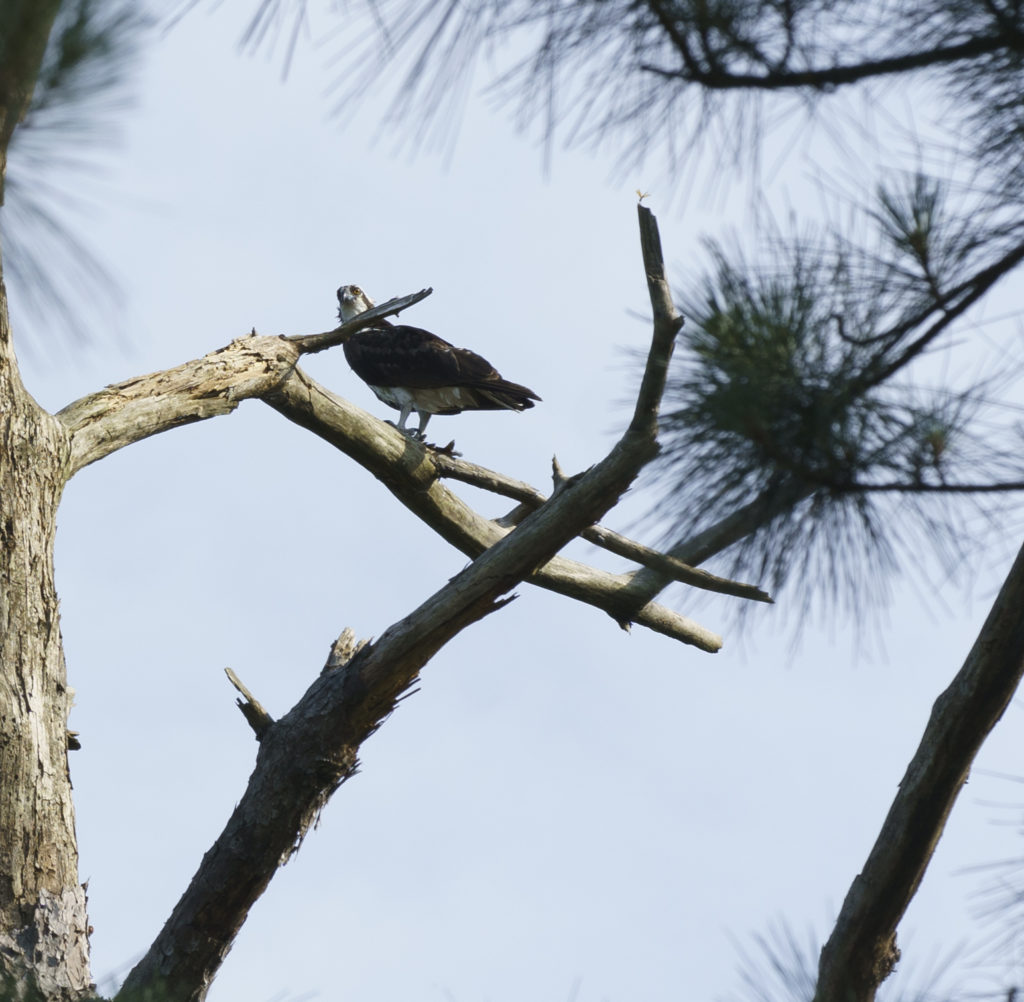
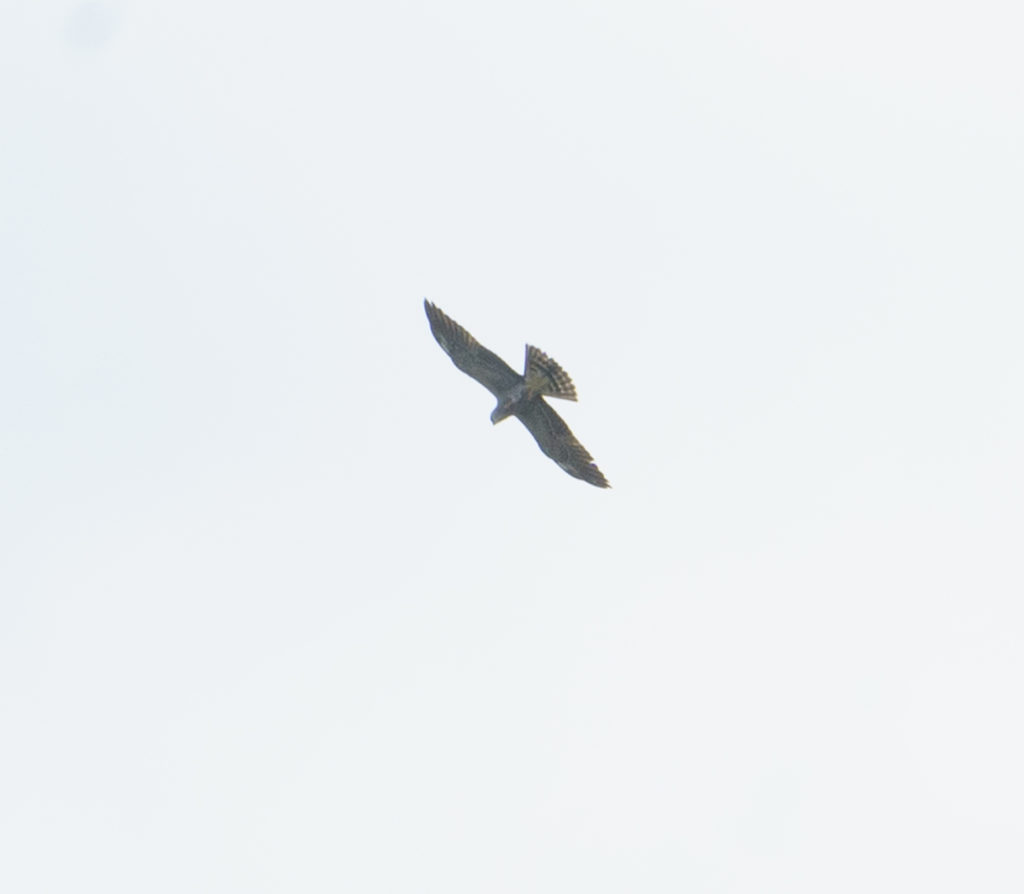
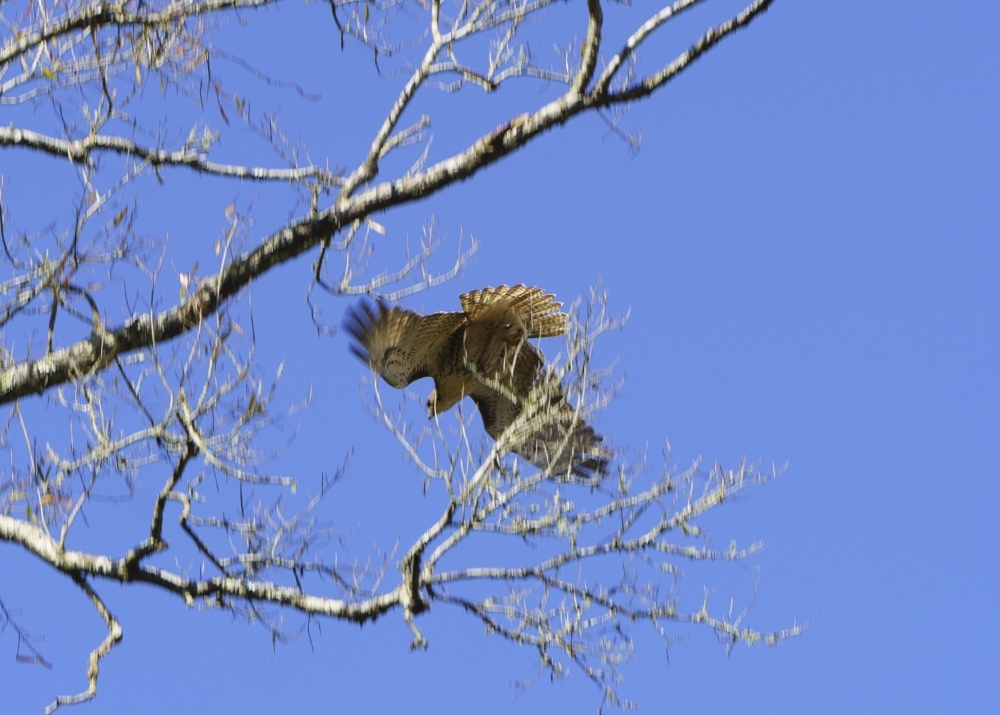
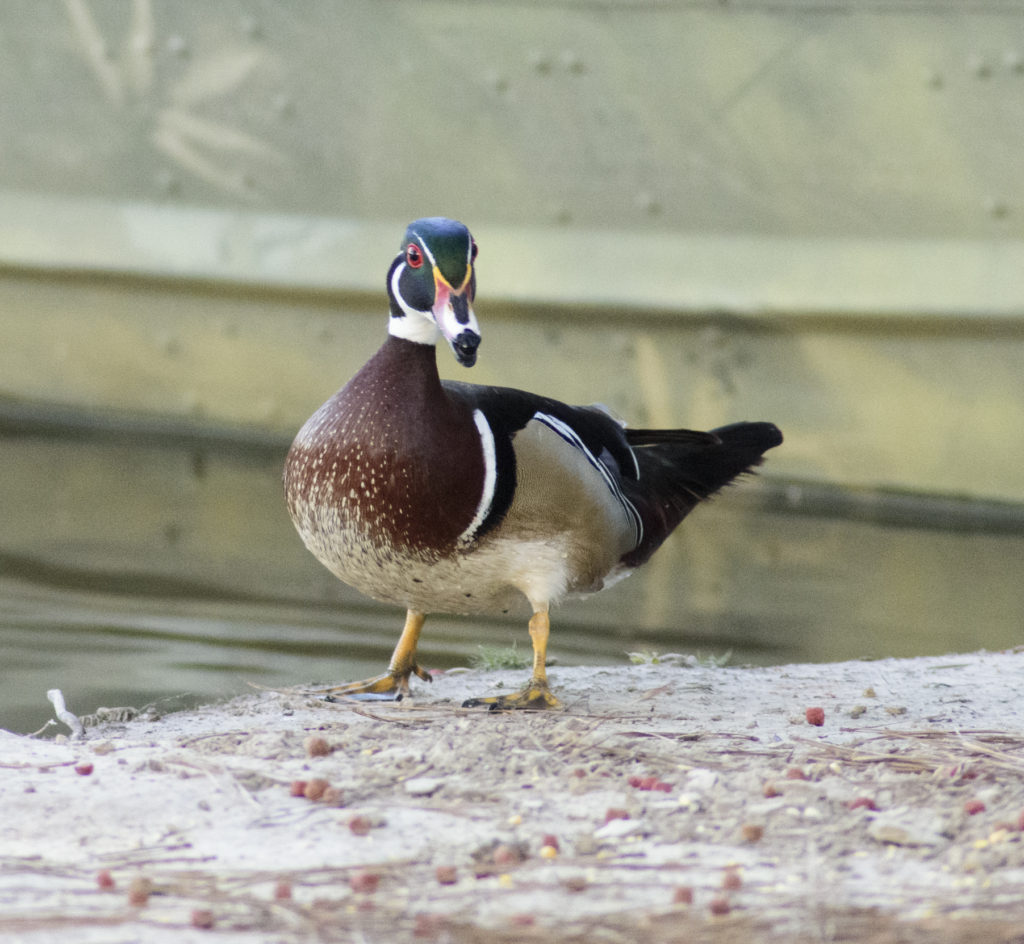
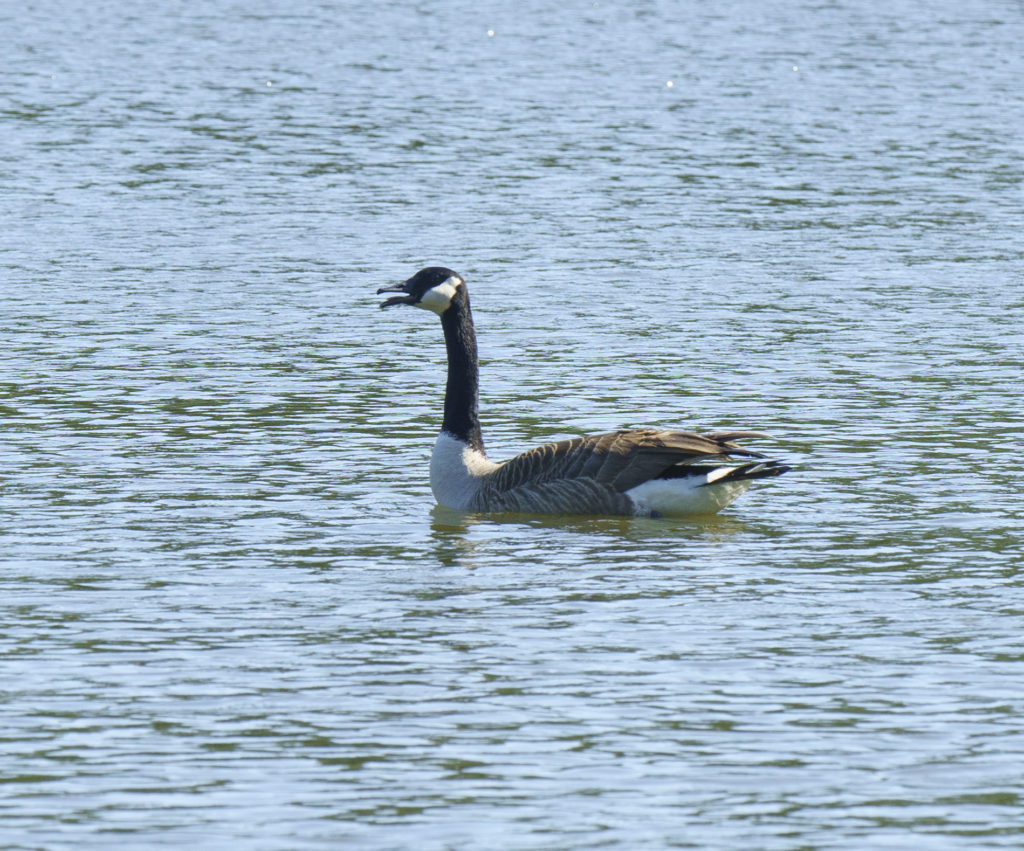

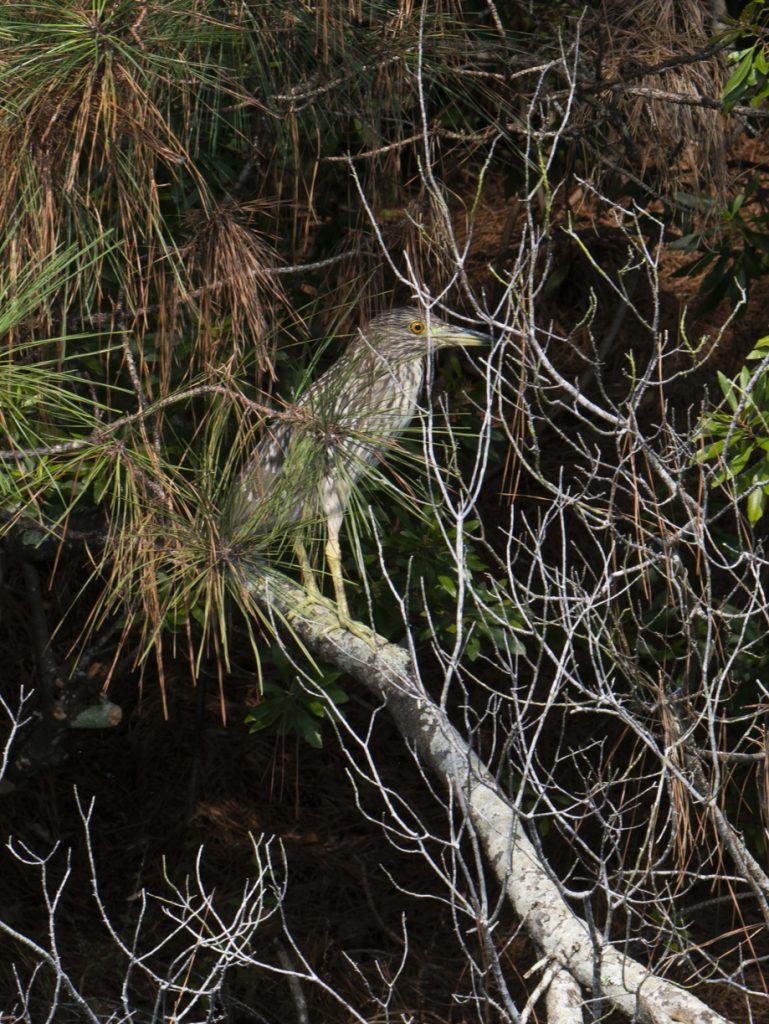
Recent Comments